#Gloria Cromwell
Photo

Bad movie I have W.C. Fields Comedy Collection Volume Two IT has You’re Telling Me 1934, The Old Fashioned Way 1934, Man on the Flying Trapeze 1935, Poppy 1936 and Never Give a Sucker an Even Break 1941
#W.C. Fields#Joan Marsh#Buster Crabbe#You’re Telling Me#Joe Morrison#Baby LeRoy#Judith Allen#The Old Fashioned Way#Mary Brian#Kathleen Howard#Grady Sutton#Man on the Flying Trapeze#Rochelle Hudson#Richard Cromwell#Catherine Doucet#Poppy#Gloria Jean#Leon Errol#Billy Lenhart#Never Give a Sucker an Even Break
1 note
·
View note
Text

natalie scatorccio (yellowjackets)
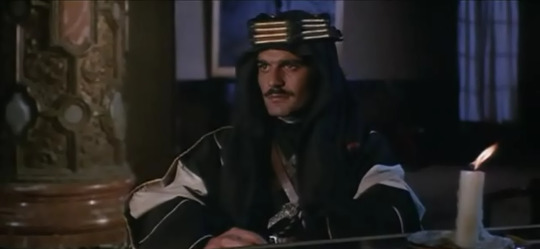
sherif ali ibn el kharish (lawrence of arabia)
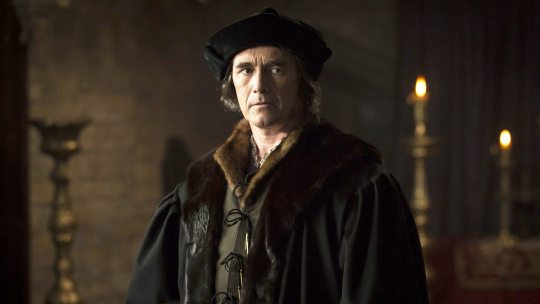
thomas cromwell (wolf hall novels)
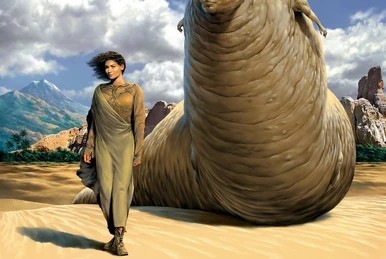
siona atreides (god emperor of dune; art found on the dune wiki )

lucrezia borgia (the borgias)

gloria burgle (fargo)
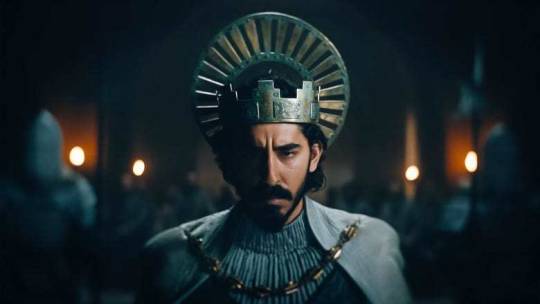
sir gawain (the green knight)

harry goodsir (the terror)
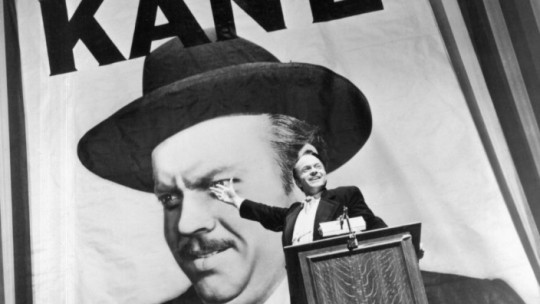
charles foster kane (citizen kane)
✨blorbo wrapped 2023✨ 9 favourite characters that i met ( & fell in love with) in 2023! thank you so much mel @lottiemilfews for tagging me!! as usual i don't know who to tag so feel free to do this if you'd like
#tag game#do you know how hard it was to limit myself to one character per medium (self imposed rule)
4 notes
·
View notes
Text
Los múltiples rostros del proletariado en los siglos XVII y XVIII
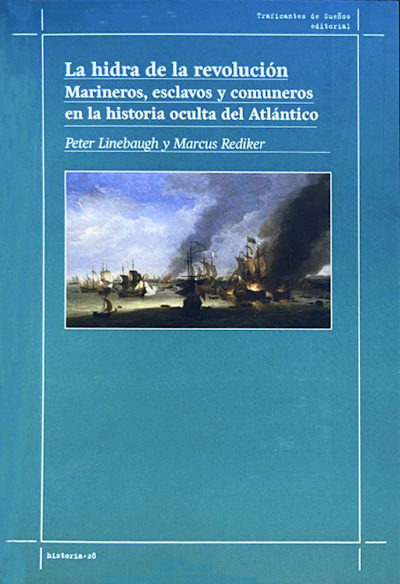
Por Jesús Aller
Tendemos a considerar la historia como resultado de las actividades de unos selectos protagonistas humanos y unas instituciones, y así elaboramos nuestra imagen de los hechos.
Contra este vicio tan arraigado, el empeño de los historiadores norteamericanos Peter Linebaugh (1943) y Marcus Rediker (1951) con La hidra de la revolución es presentar un muestrario de “personajes ignorados y luchas olvidadas” esenciales para aquilatar nuestra visión de la expansión capitalista de los siglos XVII y XVIII en el entorno del Atlántico. El libro fue publicado en 2000 y tras una primera versión castellana de Crítica en 2005, aparece ahora en el catálogo de Traficantes de sueños en una traducción de la propia editorial.
Los autores señalan en el comienzo del volumen que éste surge de una combinación de las tradiciones afroamericana, inglesa y norteamericana de la “historia desde abajo”, en la línea de W. E. B. Du Bois, C. L. R. James, E. P. Thompson o Herbert G. Gutman, entre otros. El título procede de una imagen muy cara a los constructores del capitalismo en la época que se analiza. Ellos pretendían ser Hércules, edificando el “orden social” en lucha con la hidra de numerosas cabezas, que simboliza el caos. El libro trata de recuperar algo de la historia perdida de la clase multiétnica cuya explotación hizo posible el nacimiento del capitalismo, y lo hace a través de la captura de nueve momentos privilegiados del proceso.
El capitalismo echa a andar
El naufragio del Sea Venture en julio de 1609 en las Bermudas sirvió para que algunos de los que en él viajaban organizaran, sacando partido de la fértil naturaleza de las islas y colaborando ocasionalmente con los nativos de la región, una existencia que lograba una síntesis entre el comunismo primitivo del Nuevo Mundo y el comunismo plebeyo del Viejo Mundo. Era aquél un paraíso en la tierra que no congeniaba con los intereses crematísticos de la Compañía de Virginia, directora de la empresa colonial, con lo que fue militarmente desmantelado por los que poseían títulos de propiedad y cañones para respaldarlos.
Los autores describen el régimen de terror impuesto en Inglaterra en esta etapa temprana de expansión del capitalismo, en el que la prisión, los correccionales y el cadalso eran los elementos básicos. Al otro lado del Atlántico se produce mientras tanto la acumulación primaria, a través de una “domesticación” de la naturaleza en la cual “leñadores y aguadores” tuvieron un papel protagonista. Ellos realizaban labores como talar bosques, construir barcos y puertos, desecar pantanos o acondicionar plantaciones. El personal para esto se reclutaba, muchas veces a la fuerza, entre indigentes, marginales o delincuentes, que eran deportados a América.
La cobertura ideológica para esta expropiación la aportan filósofos como Francis Bacon, que imbuido de la labor hercúlea, llama al exterminio de los salvajes, viciosos por naturaleza, así como de amplios colectivos de criminales y herejes que ponen palos en las ruedas del “progreso”. La sagrada misión de enriquecerse convirtiendo el mundo en mercancía y asesinando o esclavizando a sus habitantes queda dotada de este modo de un sólido fundamento: la lucha contra el caos en nombre de la civilización.
La voz de los de abajo en la revolución inglesa
La revolución inglesa del siglo XVII sirvió para encauzar la expansión capitalista. No obstante, hasta que fueron marginadas por Cromwell, las ideas radicales tuvieron su momento, como se pone de manifiesto en un curioso documento que se presenta en el libro. Es éste un breve retrato literario de una sirvienta de raza negra y religión anabaptista, del que es autor el ministro de su congregación y que fue escrito entre 1672 y 1678. La espiritualidad que se transparenta en el texto nos lleva, a través del concepto de la “gloria de Dios”, al de la “Nueva Jerusalén”, un escenario idílico “donde el león y el cordero yacerían juntos y se practicarían la rectitud, la justicia y la clemencia, sin acepción de personas.”
Otro momento interesante en el que aflora la “voz de los de abajo” corresponde al otoño de 1647, cuando tuvieron lugar una serie de debates en Putney, localidad en las afueras de Londres, entre Oliver Cromwell y los que defendían ideas democráticas en su ejército, liderados por Thomas Rainborough, los conocidos como “niveladores” (levellers). Estos últimos eran partidarios de la permanencia de los derechos comunales en la campiña inglesa y contrarios a la esclavitud. Los debates pueden sintetizarse en la pugna entre democracia, por un lado, que de materializarse podría ser usada por los pobres para crear un mundo igualitario, y el concepto de propiedad, por otro, que si aspira a perpetuarse debe tener claro que ha de oponerse a dar voz a los de abajo.
Linebaugh y Rediker analizan las repercusiones de estos debates, que dieron sustento ideológico a la revuelta de Masaniello en Nápoles (1647), en la que el proletariado de una ciudad europea tomó el poder y gobernó solo por primera vez. Después sus ecos llegaron hasta Londres en dos ocasiones (1649, 1659-1660), Irlanda (1649-1651), Barbados (1649), el Río Gambia (1652) y Virginia (1663-1676). Los datos que se aportan muestran cómo la explotación que se estaba imponiendo desde arriba era contestada en escenarios muy diversos.
Nuevos gritos de los “sin voz” (1680-1760)
A finales del siglo XVII los gobiernos se han dotado de un sistema financiero capaz de regular el comercio en el ámbito atlántico, constituyendo lo que se ha dado en llamar hidrarquía o estado marítimo. Sin embargo, al mismo tiempo, los marineros, clase explotada que ha devenido esencial, se oponen a ello utilizando como instrumento el propio barco que es el motor del capitalismo.
El libro describe en detalle la vida de estos “proletarios del mar”, cuya miseria y esclavitud generaban copiosos dividendos a las compañías, y nos acerca a los espacios de resistencia que surgieron ya a lo largo del siglo XVII. En los comienzos de la centuria siguiente, los marineros van más allá y desarrollan un orden social autónomo y una alternativa subversiva a las flotas que surcaban los mares. El poder que implantan para ello es una hidrarquía desde abajo, que aporta una dimensión novedosa a la historia del pillaje en el mar, hasta aquel momento en manos de nobles o comerciantes. La piratería de nuevo cuño que nace por entonces tiene como rasgos esenciales: democracia, igualitarismo y rechazo de los prejuicios racistas. Se aprecia también en ella conciencia de clase e instinto de justicia, que hacía respetar la vida de los capitanes apresados que no hubieran sido crueles en su cargo.
La masiva respuesta del estado conseguirá aplastar esta piratería de oposición al capital poco después de 1720, pero en los años siguientes irá surgiendo contestación en otros ámbitos. En las décadas de 1730 y 1740, un espíritu de revuelta crecía poderoso entre los negros de Norteamérica y el Caribe, y así en la Nueva York de 1741 se registra una importante sublevación de un proletariado variopinto, compuesto en su mayoría por esclavos. Parece ser que los orígenes de este estallido que destruyó cuarteles y otros edificios deben buscarse en los muelles, en la transmisión de las experiencias de resistencia de los regimientos militares y las plantaciones y en las prédicas de la religiosidad popular.
Voces desde abajo en la Revolución estadounidense y la lucha contra el esclavismo (1760-1830)
En las décadas de 1760 y 1770 se producen en Norteamérica disturbios, con protagonistas multiétnicos y procedentes de ámbitos diversos, como el mar, las ciudades o las plantaciones. El libro pasa revista a estos hechos y concluye que contribuyeron poderosamente a desestabilizar la sociedad civil imperial e impulsaron a las trece colonias hacia una guerra de liberación, que fue la primera de estas características en todo el mundo. Se describe también cómo tras la revolución se adulteró la historia para negar los elementos de lucha de clases que se habían dado y enfatizar sólo la disputa entre naciones.
Lograda la independencia, los revolucionarios frustrados encontrarán su vía de acción en la oposición al esclavismo, la cual se fortalece a finales del siglo XVIII. Los últimos capítulos están dedicados a dos casos concretos de estas tentativas. El primero es el de Edward y Catherine Despard, encuadrado en un ciclo de rebeliones iniciado en 1790 en el que las movilizaciones no se producen sólo por cuestiones de raza o clase social, sino que plantean un esfuerzo en pos de “la liberación de la raza humana como un todo”.
El otro ejemplo estudiado es el de Robert Wedderburn (1762-1835), hijo de una esclava y un rico propietario, nacido en Jamaica y luego político radical y abolicionista en Londres. Él veía la historia como un ciclo inevitable de expropiación y resistencia, y logró combinar religiosidad, cristiana al principio y después deísta, republicanismo y lucha contra la trata, en un único ideal de igualdad de derechos y opciones vitales para todos los “ciudadanos del mundo”.
Una nueva visión de la dinámica social
El historiador marxista británicoE. P. Thompson consideraba que la clase social que sufre la depredación capitalista sólo llega a definirse y adquirir conciencia de tal a través de la experiencia de la explotación, y planteando estrategias para superarla, y no como un mero “desprendimiento” de las condiciones materiales o de la tarea “educativa” de vanguardias. El proletariado se conforma en su lucha contra la violencia a que es sometido, y abundando en ello, lo que Linebaugh y Rediker nos muestran en La hidra de la revolución es que este proceso tiene como protagonista a una humanidad cosmopolita, multiétnica y con ocupaciones y oficios muy diversos. Se transciende así la concepción clásica de la dinámica emancipadora, liderada por una clase obrera industrial con una serie de pautas culturales bien definidas.
En la perspectiva del libro, procesos aparentemente dispersos pueden dotarse de un hilo conductor, que no es otro que la resistencia a la trituradora capitalista. Este empeño sin duda es muy ambicioso y el libro ha sido criticado en ocasiones, discutiéndose el carácter “colectivista, antiautoritario e igualitario” que se atribuye a sus protagonistas o achacándosele un “romanticismo marxista” que suma en su ecuación de forma indiscriminada a todas las víctimas y todos los rebeldes. Sin embargo, sorprende comprobar a lo largo de la obra cómo en ámbitos tan diversos como pueden serlo los de supervivientes de naufragios, quilombos, revueltas urbanas, fraternidades religiosas disidentes o barcos piratas, se advierte la pujanza de una alternativa a la explotación del capital fundamentada en la solidaridad y el apoyo mutuo.
La rigurosa exposición de datos de La hidra de la revolución resulta enormemente informativa y sugestiva, pero tal vez el mérito principal del libro sea superar el esquematismo que ha empobrecido muchas veces los análisis cuando se pretende definir las relaciones económicas del capitalismo con un énfasis excesivo en las “relaciones sociales de producción” que se dan en la factoría. Leyendo a Linebaugh y Rediker aprendemos que el proletariado no es una categoría preestablecida y uniforme, sino que se conforma en la lucha durante los decisivos siglos XVII y XVIII y que es transnacional, con variedad de raza y de género, esclavo, campesino, artesano y marinero, y todo ello simultáneamente.
Hay que decir además que analizando conflictos tan diversos, no sólo se interpreta el pasado, sino que se comprende también un presente en el que el mismo Moloch capitalista, ahora en fase senil, es atacado desde ángulos tan variados como lo son sus víctimas.
Blog del autor: http://www.jesusaller.com/. En él puede descargarse ya su último poemario: Los libros muertos.
2 notes
·
View notes
Text
Ser usado como un instrumento de la gloria de Dios debe ser nuestro mayor gozo.
Oliver Cromwell
0 notes
Text
The War of the Roses (1989) Review
The War of the Roses (1989) Review
When married couple Oliver and Barbara begin to hate the sight of one another they decide that divorce is the only option, the issue though that neither of them want to give up the house so the battle against one another becomes bigger as they do everything possible against the other.
⭐️⭐️⭐️⭐️
(more…)
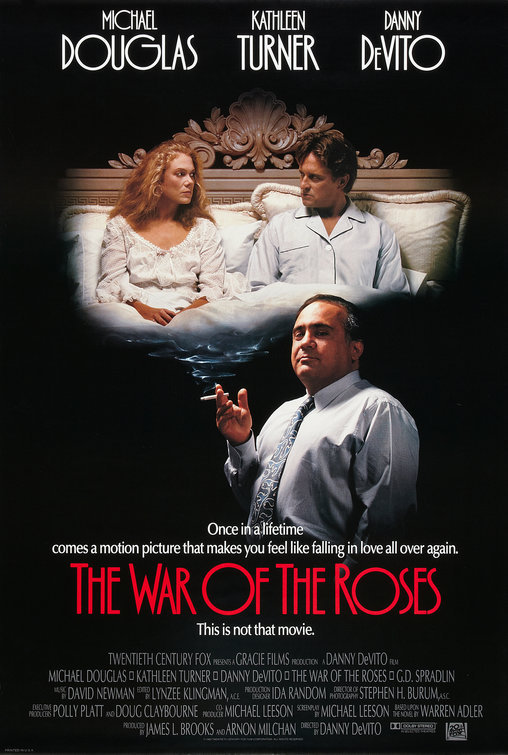
View On WordPress
#1989#Comedy#Dan Castellaneta#Danny DeVito#G.D. Spradlin#Gloria Cromwell#Harlan Arnold#Heather Fairfield#Kathleen Turner#Marianne Sagebrecht#Mary Fogarty#Michael Leeson#Patricia Allison#Peter Brocco#Peter Donat#Philip Perlman#Review#Rika Hofmann#Romance#Sean Astin#Star on Disney+#Susan Isaacs#The War of the Roses#Trenton Teigen#Warren Adler
0 notes
Photo
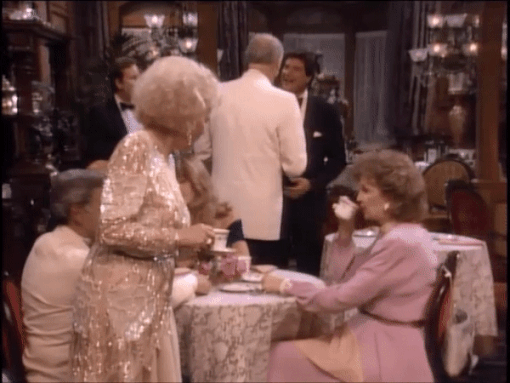
The Golden Girls
Season 7
Episode 2 The Case of the Libertine Belle
#terrific#terrific gif#animated gif#golden girls#The Golden Girls#golden girls gif#the golden girls gif#reaction#reaction gif#libertine belle#The Case of the Libertine Belle#Gloria Cromwell#80's television#made by CrapolaInABox
18 notes
·
View notes
Photo
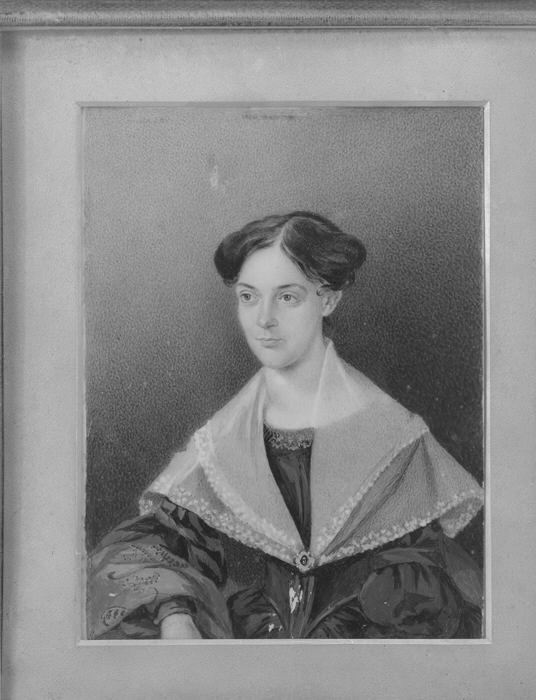
Aunt Rhoda, Charles Cromwell Ingham, 1844, American Paintings and Sculpture
Gift of Gloria Manney, 2006
Size: 4 1/8 x 3 1/8 in. (10.5 x 8 cm)
Medium: Watercolor on ivory
https://www.metmuseum.org/art/collection/search/15089
18 notes
·
View notes
Photo



[HPHM] Rowan Khanna Playlist
suggested by @immagrosscandy // featuring Dev Patel and Katrina Kaif as Rowan
“Belle” ~ Beauty and the Beast
“The Wizard and I (cover)” ~ Elsie Lovelock
“I’ll Be There For You” ~ The Rembrandts
“Book of Dreams” ~ Bruce Springsteen
“Lean on Me” ~ Bill Withers
“Time After Time” ~ Cyndi Lauper
“I Am What I Am” ~ Gloria Gaynor
“Stand by Me” ~ Ben E. King
“See You Again” ~ Wiz Khalifa ft. Charlie Puth
Rowan Khanna was the brave, loyal, brilliant, and ambitious only child of a pair of wand-tree farmers. Whatever she expected when she first arrived in Diagon Alley, it was not running into the younger sister of “delinquent” Jacob Cromwell, Carewyn, but from the moment the two collided, Rowan immediately knew her life at Hogwarts was going to be a million times better and more exciting than she could’ve imagined. Neither Carewyn nor Rowan had ever had a real friend before, but Rowan immediately warmed up to the passionate, yet sensitive girl -- especially when the two went into the bookstore together and Carewyn just couldn’t help but hum songs under her breath as they picked out their schoolbooks. Carewyn and Rowan’s instant fondness for each other was justified when Rowan told off some older kids for bullying Carewyn about her brother and when Carewyn later stood up to Merula Snyde to protect Rowan, even if it resulted in her losing house points. As the years went by, Carewyn changed a lot, developing from an overly sensitive, self-conscious, and hot-tempered girl to a stylish, poised, confident Mama Bear, while Rowan remained as studious, single-minded, and socially awkward as ever. That did result in a bit of tension between them for a short while, as Rowan felt like Carewyn was sort of “leaving her behind” and felt insecure about how the only friends she really had were ones she made through the more popular and charming Carewyn. Fortunately in their fifth year, after a small flare-up, the feelings cooled. It soon became clear that they each thought they were holding the other back, and that Carewyn herself envied Rowan for being able to just be herself and focus on her dreams, rather than being what everyone else needed her to be. This heart-to-heart made the two girls closer than ever...and yet, because of that, in their sixth year, Rowan was one of the first to get a bad feeling that Carewyn was holding something back and hiding her true emotions again. Even Carewyn’s other friends like Ben, Penny, Talbott, Chiara, and Charlie had started to notice -- but Carewyn seemed almost physically unable to rely on them, as if she were Atlas carrying the world on her shoulders and refused to inflict that heavy burden on anyone else. Knowing that her friend wouldn’t ask for help until it was far, far too late, Rowan made the decision to follow Carewyn around in secret from a distance, just to make sure she was there, in case Carewyn ended up needing her. Unfortunately the time Carewyn ended up needing Rowan also ended up being the worst day in Carewyn’s life...and the last day of Rowan’s. But although Rowan’s life ended, her legacy lasted far beyond her, forging chains of love and fealty between all of the people she’d touched in life and inspiring them to fight, grow, and live for her.
#hphm#hogwarts mystery#rowan khanna#playlist#okay to start with?#four of those songs are actually covered by anthem lights in their 'friend medley'#which I associate with carewyn's fellow leaders in the circle of khanna bill charlie ben and merula#so it's like they're evoking rowan when they're showing support to carewyn post-Redacted ;~;#but yeah besides that...I'm sorry rowan as elphaba and belle brings me WAY TOO MUCH JOY OKAY#rowan was that brilliant and beautiful and perfect and she would've changed the world!!#they would've regardless of their gender#once again I used neutral colors even though my rowan is slytherin just like carewyn#since rowan is in mc's house in the game and I know other people who see rowan as ravenclaw even if their mc isn't
55 notes
·
View notes
Note
3, 4, 5 of the new years ask?
ahhh thank you!!
3. Top Five Books--I had a really good reading year this year! This was hard!
1. Till We Have Faces by C.S. Lewis was my first read of the year and rec'd by the much better-read attonitos-gloria. It was a very profound reading experience for me? And it sparked a Lewissance this year--I read or re-read a lot of my man Clive Staples' work. He has been a longtime favorite writer of mine--he really is so, so good at expressing complicated thoughts in a creative and beautifully expressive way--and it was so interesting to read much of his work closely together.
2. The Bloody Chamber and Other Stories by Angela Carter--Omg I loved this collection. So weird and sexy and disturbing. Also, I would let the Erl-King rail me. And I know that doesn't say great things about me as a person but it's my truth.
3. Wolf Hall by Hilary Mantel--These books are my only topic of conversation, I'm so sorry. If anyone reads these, DM me for the memes I have made about this series. I don't like much historical fiction because it feels so artificial but this felt *urgent* and *fresh.* I have a degree in European History and when something happens, stuff I know happens happens, it's done in a way that every time I'm left: *surprised pikachu face* TL;DR: He, Cromwell, holds my heart.
4. Atonement by Ian McEwan--Briony Tallis is the OG Bad Art Friend and should choke on an apple slice.
5. Accidentally Brave by Maddie Corman--I sobbed reading this. SOBBED. An elegy for love. What an incredible woman she is.
4. Top movies--ahh some of the movies I most want to see aren't out yettttt
1. tick...tick...BOOM: I loved this so much. It was so weird and meta. I loved it.
2. The Green Knight--I don't know if I liked this but it made me think and that's probably good for me.
3. Cruella--Haters don't want to see a girlboss winning. This movie was so deranged. I unironically loved it though.
4. The Book of Kells--Not new, but new to me. Gorgeous, gorgeous, gorgeous.
5. It's going to be Cyrano. why even pretend i'm going to assess this movie with any sort of objectivity. It's not even out yet but it's by my husband and my wife. I will accept no criticisms.
5. Top TV series you binged
1. The Vow--this was a problematic documentary but I BINGED this.
2. Crazy Ex-Girlfriend--Iconic on every level
3. Spinning Out--Imagine a dark Hallmark movie but 10 episodes.
4. The Crown--This season SLAPPED. Inject Olivia Colman into my veins.
5. The Queen's Gambit--I'm a basic bitch. But I loved this.
4 notes
·
View notes
Text
NICHOLAS RAY: EL ESLABÓN PERDIDO
El tiempo y los «hombres-película» decidirán la importancia de su obra inconclusa, irregular, despareja, desequilibrada, fragmentaria, mutilada, imperfecta, pero también hiriente, candente, lacerante y sentida. De lo que ya no puede caber duda es del lugar central que ocupa en la historia del cine. Si se quiere entender la evolución del llamado séptimo arte más allá de la mera cronología y de los sofismas sociológicos, como relevo de miradas complementarias y sucesión de formas, que, a largo plazo, trazan lo que Godard llamaría «la línea discontinua de la continuidad», hay que estudiar a fondo las encrucijadas, los puntos de inflexión en que se rompe con el presente y se reenlaza con el pasado para dar un nuevo salto adelante. Después de la segunda guerra mundial, las «cabezas buscadoras del cine» —en expresión de Rivette— fueron fundamentalmente dos: Roberto Rossellini, en Europa, y Nicholas Ray, en América. Rossellini infundió nueva vitalidad a la quebrada tradición realista europea (casi siempre francesa: de Lumière a Renoir, pasando por Pagnol). La mediación de Ray fue, si cabe, más decisiva y menos consciente: procedente del teatro, la radio y la arquitectura, conocedor del jazz, la música popular, la geografía y las gentes de su vasta tierra, fue el único de su generación que supo tender un puente entre la estilización germánica del clasicismo narrativo alumbrado en el mudo y el cine del futuro, mayoritariamente europeo, influido por la libertad del primer Rossellini y deliberadamente empeñado en asimilar las enseñanzas (olvidadas o pervertidas) de todos los cineastas que le precedieron. Es decir, que Ray partió de Fritz Lang, que se consideraba a sí mismo «el último dinosaurio» (They Live by Night no disimula su deuda para con You Only Live Once, y no es difícil detectar en Johnny Guitar, Run for Cover o The True Story of Jesse James las huellas respectivas de Rancho Notorious, Fury o The Return of Frank James), para señalarle el camino a Jean-Luc Godard, que hoy se me antoja «el último piel roja» (À bout de souffle, Bande à part, Pierrot le fou, Masculin Féminin). ¿Quiere esto decir que la cadena se ha roto?, ¿que esta historia ha terminado? Es de temer que así sea, si alguien no le pone remedio de inmediato; si Wenders, Scorsese o Pialat no maduran y se definen, radicalizándose, si dejan que muera la generación quemada antes de aprender de sus películas un lenguaje y unos conocimientos que tanto costó adquirir y preservar. Pasó el tiempo del i can't get started, pues ya no queda más que el ghost of a chance de que dentro de unos años podamos decir the song remains the same: el cine se está jugando su propia supervivencia.
BIOFILMOGRAFÍA
RAYMOND Nicholas Kienzle nace el 7 de agosto de 1911, en La Crosse, Wisconsin. Hijo único, aspira a ser director de orquesta o teatro; mientras estudia, escribe, dirige radio y obtiene beca para la Universidad que prefiera del mundo: en 1927 ingresa en la de Chicago. Seleccionado con treinta y cuatro jóvenes para un seminario del arquitecto Frank Lloyd Wright (1929). En 1930 se casa, y al año nace un hijo, Anthony (Bob Younger en The True Story of Jesse James). Vuelve a Nueva York, con Houseman, que dirige el grupo teatral The Phoenix, y en 1942 le hace jefe de emisiones de la Office of War Information; adopta el nombre de Nicholas Ray. En 1943, con el OSS: emisiones para países ocupados; escritor y director radiofónico en CBS; teatro en Broadway. En 1944, ayudante de dirección del primer film de Kazan (A Tree Grows in Brooklyn), en Hollywood. Al llamar Dore Schary a Houseman, Ray le acompaña a Hollywood. Houseman produce en RKO el primer film de Ray, The Live By Night (1947), estrenado en Inglaterra —como The Twisted Road—, en 1948, y en 1949, en Estados Unidos, adaptación propia de Thieves Like Us, de Edward Anderson. En 1948 se casa con Gloria Grahame y nace Timothy Nicholas (que sale en Lightning Over Water). Dirige A Woman's Secret y —prestado a la productora de Bogart— Knock on Any Door (Llamad a cualquier puerta), que se distribuye en 1949. Con adaptación suya y para Houseman, otra vez, realiza On Dangerous Ground —Ida Lupino rodó algún plano al enfermar Ray—, que no se estrena hasta 1951, y también en 1949-50, de nuevo cedido a Santana/Columbia, su versión de In A Lonely Place, de Dorothy B. Hughes. Se separa en secreto de Grahame, aunque hasta 1952 no se divorcia; hace Born to Be Bad (1950) en Inglaterra Bed of Roses. En 1951, por primera vez en color, Flying Leathernecks (Infierno en las nubes), y rechaza el cargo de jefe de producción de RKO que le ofrece Howard Hughes; accede a completar Jet Pilot y Macao (Sternberg), The Racket (Cromwell) y Androcles and the Lion (Chester Erskine). Robert Parrish rueda una escena de The Lusty Men (1952), mientras Ray sana de quemaduras sufridas al salvar de un incendio a los cachorros de Bogart. Da por terminado su contrato con RKO; al parecer, estuvo en la «lista gris» de los seguidores de McCarthy. Una fuente le atribuye High Green Wall (?) en 1953, año en el que emprende Johnny Guitar (1954), como productor asociado, coguionista no acreditado y director. En 1954 emplea el procedimiento vistavision en Run for Cover (Busca tu refugio), que se estrena al año siguiente, y conoce a James Dean, protagonista de Rebel Without a Cause (Rebelde sin causa, 1955), primer Ray en Cinemascope, con argumento del cineasta (que interviene como figurante). Quiere producir con Dean Heroic Love, pero la muerte del actor, el 30 de septiembre, desbarata sus proyectos y le afecta profundamente. En 1955-56 rueda Tambourine, que se estrena como Hot Blood (Sangre caliente); en desacuerdo con la producción abandonó el montaje. En 1956 se edita en Francia su novelización de Rebel, La Fureur de vivre, y empieza el libro Rebel: Life Story of a Film, que nunca terminó. En París conoce a sus admiradores de Cahiers du Cinéma, futuros cineastas de la Nouvelle Vague. No consigue fundar, con Rex Cole, una compañía para hacer un guión de Eric Ambler; producida e interpretada por James Mason, realiza Bigger Than Life, con guión el crítico inglés Gavin Lambert, Clifford Odets y Ray (los tres sin acreditar). En 1956-57, The True Story of Jesse James (G. B.: The James Brothers; La verdadera historia de Jesse James), remontada por el productor con planos del ayudante Joseph E. Richards. En 1957 empieza a pasar temporadas en Europa; rueda en Francia y en el desierto libio Bitter Victory/Amère victoire, en scope blanco y negro, con Lambert y René Hardy de coguionistas y diálogos de Paul Gallico y Raymond Queneau. Filma en los pantanos de Florida, en color y panorámica, un guión de Budd Schulberg —que dirige algún plano—, Wind Across the Everglades, y luego, todavía en 1958, Party Girl (Chicago, año 30), en la que sale la bailarina Berry Utey, con la que se casa y tendrá dos hijos. Tras numerosos proyectos frustrados, rueda en Canadá, Inglaterra e Italia The Savage Innocents/Ombre bianche/Les dents du diable (Los dientes del diablo, 1959-60), con segunda unidad de Baccio Bandini y guión propio. El proyecto The Man of Nazareth se convierte en King of Kings (Rey de reyes, 1960-61) al hacerle venir a España Samuel Bronston; guión de Ray y Philip Yordan, segundad unidad de Noel Howard y Summer Williams; MGM rehace y mutila el montaje inicial. Más proyectos irrealizados: Circus World (El fabuloso mundo del circo), escrito con Yordan para Bronston en 1962, pasa a Capra, pero es Hathaway quien la dirige, en 1964. Segunda superproducción en 70 mm. con Bronston, 55 Days at Peking (55 días en Pekín), 1962-63), en la que interpreta un personaje; tras misteriosa enfermedad abandona el film, que acaban Howard Andrew Marton y Guy Green. Pone el restaurante Nicaa's, en Madrid (hasta 1968), rompe definitivamente con Bronston y tiene múltiples ideas y guiones que no ven la luz (sólo en 1967 está a punto de iniciar, en Yugoslavia, The Doctor and the Devils, guión escrito en 1953 por Dylan Thomas). Viaja por toda Europa: Polonia (monta la versión internacional de Popioly, 1965, de Wajda), Alemania, Francia, Checoslovaquia..., y rueda, cuando puede, en 8, súper 8, 16, súper 16, 35 mm. y video, experimentos de pantalla dividida. En 1968 vuelve a Chicago para filmar la Convención Demócrata y el proceso contra los Siete de Chicago, pero no acaba la película; algún material usado en American Revisited (1972), de Marcel Ophuls, y en We Can't Go Home Again, film que rueda entre 1971 y 1973 y que no llegó a montar definitivamente (aunque se proyectó en Cannes en 1974). En 1979, tras una embolia, pierde un ojo. Desde 1971 da clases prácticas de cine en Harpur College y otros centros universitarios; entre sus alumnos están Susan Schwartz, que se convierte en su cuarta esposa. En 1974 aparece en el documental-entrevista de David Helpern Jr. I'm a Stranger Here Myself, y dirige y protagoniza, en Europa, el episodio The Janitor/Der Hausmeister, en Wet Dreams (Sueños húmedos). Escribe un guión con el crítico inglés V. F. Perkins (1976); a punto de hacer City Blues (1976-77), no consigue financiación. En 1977 rueda un corto en 16 mm. Actor en Der amerikanische Freund (El amigo americano, 1976-77), de Wenders, y Hair (1978-79), de Forman. Se agrava su cáncer, y es intervenido varias veces (cerebro, pulmón). En marzo de 1979 pide a Wenders que le ayude a dirigir lo que ahora es Lightning Over Water/Nick's Movie/Nick's Film (Relámpago sobre agua, 1980), pero muere antes de terminar, entre el 16 y el 18 de junio de 1979 (las fuentes no se ponen de acuerdo acerca de cuál de esos tres días falleció).
Miguel Marías
Revista “Casablanca” nº 5, mayo-1981
1 note
·
View note
Text
Jesse Owens

James Cleveland "Jesse" Owens (September 12, 1913 – March 31, 1980) was an American track and field athlete and four-time gold medalist in the 1936 Olympic Games.
Owens specialized in the sprints and the long jump, and was recognized in his lifetime as "perhaps the greatest and most famous athlete in track and field history". He set three world records and tied another, all in less than an hour at the 1935 Big Ten track meet in Ann Arbor, Michigan—a feat that has never been equaled and has been called "the greatest 45 minutes ever in sport".
He achieved international fame at the 1936 Summer Olympics in Berlin, Germany, by winning four gold medals: 100 meters, 200 meters, long jump, and 4 × 100-meter relay. He was the most successful athlete at the Games and, as a black man, was credited with "single-handedly crushing Hitler's myth of Aryan supremacy", although he "wasn't invited to the White House to shake hands with the President, either."
The Jesse Owens Award is USA Track and Field's highest accolade for the year's best track and field athlete. Owens was ranked by ESPN as the sixth greatest North American athlete of the 20th century and the highest-ranked in his sport. In 1999, he was on the six-man short-list for the BBC's Sports Personality of the Century.
Early life and education
Jesse Owens, originally known as J.C., was the youngest of ten children (three girls and seven boys) born to Henry Cleveland Owens (a sharecropper) and Mary Emma Fitzgerald in Oakville, Alabama, on September 12, 1913. At the age of nine, he and his family moved to Cleveland, Ohio, for better opportunities, as part of the Great Migration, when 1.5 million African Americans left the segregated South for the urban and industrial North. When his new teacher asked his name (to enter in her roll book), he said "J.C.", but because of his strong Southern accent, she thought he said "Jesse". The name stuck, and he was known as Jesse Owens for the rest of his life.
As a youth, Owens took different menial jobs in his spare time: He delivered groceries, loaded freight cars and worked in a shoe repair shop while his father and older brother worked at a steel mill. During this period, Owens realized that he had a passion for running. Throughout his life, Owens attributed the success of his athletic career to the encouragement of Charles Riley, his junior high school track coach at Fairmount Junior High School. Since Owens worked in a shoe repair shop after school, Riley allowed him to practice before school instead.
Owens and Minnie Ruth Solomon (1915–2001) met at Fairmont Junior High School in Cleveland when he was 15 and she was 13. They dated steadily through high school. Ruth gave birth to their first daughter, Gloria, in 1932. They married on July 5, 1935 and had two more daughters together—Marlene, born in 1937, and Beverly, born in 1940. They remained married until his death in 1980.
Owens first came to national attention when he was a student of East Technical High School in Cleveland; he equaled the world record of 9.4 seconds in the 100-yard (91 m) dash and long-jumped 24 feet 9 1⁄2 inches (7.56 meters) at the 1933 National High School Championship in Chicago.
Career
Ohio State University
Owens attended the Ohio State University after his father found employment, which ensured that the family could be supported. Affectionately known as the "Buckeye Bullet" and under the coaching of Larry Snyder, Owens won a record eight individual NCAA championships, four each in 1935 and 1936. (The record of four gold medals at the NCAA was equaled only by Xavier Carter in 2006, although his many titles also included relay medals.) Though Owens enjoyed athletic success, he had to live off campus with other African-American athletes. When he traveled with the team, Owens was restricted to ordering carry-out or eating at "blacks-only" restaurants. Similarly, he had to stay at "blacks-only" hotels. Owens did not receive a scholarship for his efforts, so he continued to work part-time jobs to pay for school.
Owens achieved track and field immortality in a span of 45 minutes on May 25, 1935, during the Big Ten meet at Ferry Field in Ann Arbor, Michigan, where he set three world records and tied a fourth. He equaled the world record for the 100-yard dash (9.4 seconds) (not to be confused with the 100-meter dash), and set world records in the long jump (26 ft 8 1⁄4 in or 8.13 m, a world record that would last for 25 years); 220 yards (201.2 meters) sprint (20.3 seconds); and 220-yard low hurdles (22.6 seconds, becoming the first to break 23 seconds). Both 220 yard records may also have beaten the metric records for 200 meters (flat and hurdles), which would count as two additional world records from the same performances. In 2005, University of Central Florida professor of sports history Richard C. Crepeau chose these wins on one day as the most impressive athletic achievement since 1850.
1936 Berlin Summer Olympics
On December 4, 1935, NAACP Secretary Walter Francis White wrote a letter to Owens, although he never actually sent it. He was trying to dissuade Owens from taking part in the Olympics on the grounds that an African-American should not promote a racist regime after what his race had suffered at the hands of white racists in his own country. In the months prior to the Games, a movement gained momentum in favor of a boycott. Owens was convinced by the NAACP to declare "If there are minorities in Germany who are being discriminated against, the United States should withdraw from the 1936 Olympics." Yet he and others eventually took part after Avery Brundage, president of the American Olympic Committee branded them "un-American agitators".
In 1936, Owens and his United States teammates sailed on the SS Manhattan and arrived in Germany to compete at the Summer Olympics in Berlin. Owens arrived at the new Olympic stadium to a throng of fans, according to fellow American sprinter James LuValle (who won the bronze in the 400 meters), many of them young girls yelling "Wo ist Jesse? Wo ist Jesse?" ("Where is Jesse? Where is Jesse?") Owens's success at the games represented an unpleasant consternation for Hitler, who was using them to show the world a resurgent Nazi Germany. He and other government officials had high hopes that German athletes would dominate the games with victories.
Just before the competitions, Adi Dassler visited Owens in the Olympic village. He was the founder of the Adidas athletic shoe company, and he persuaded Owens to wear Gebrüder Dassler Schuhfabrik shoes; this was the first sponsorship for a male African American athlete.
On August 3, he won the 100 m dash with a time of 10.3 seconds, defeating a teammate and a college friend Ralph Metcalfe by a tenth of a second and defeating Tinus Osendarp of the Netherlands by two tenths of a second. On August 4, he won the long jump with a leap of 8.06 m (26 ft 5 in) (3¼ inches short of his own world record). He later credited this achievement to the technical advice that he received from Luz Long, the German competitor whom he defeated. On August 5, he won the 200 m sprint with a time of 20.7 s, defeating teammate Mack Robinson (the older brother of Jackie Robinson). On August 9, he won his fourth gold medal in the 4 × 100 m sprint relay when head coach Lawson Robertson replaced Jewish-American sprinters Marty Glickman and Sam Stoller with Owens and Ralph Metcalfe, who teamed with Frank Wykoff and Foy Draper to set a world record of 39.8 s in the event. Owens had initially protested the last-minute switch, but assistant coach Dean Cromwell said to him, "You'll do as you are told." Owens' record-breaking performance of four gold medals was not equaled until Carl Lewis won gold medals in the same events at the 1984 Summer Olympics in Los Angeles. Owens had set the world record in the long jump with a leap of 8.13 m (26 ft 8 in) in 1935, the year before the Berlin Olympics, and this record stood for 25 years until it was broken in 1960 by countryman Ralph Boston. Coincidentally, Owens was a spectator at the 1960 Summer Olympics in Rome when Boston took the gold medal in the long jump.
The long-jump victory is documented, along with many other 1936 events, in the 1938 film Olympia by Leni Riefenstahl. On August 1, 1936, Hitler shook hands with the German victors only and then left the stadium. International Olympic Committee president Henri de Baillet-Latour insisted that Hitler greet every medalist or none at all. Hitler opted for the latter and skipped all further medal presentations.
Owens first competed on Day 2 (August 2), running in the first (10:30 a.m.) and second (3:00 p.m.) qualifying rounds for the 100 meters final; he equaled the Olympic and world record in the first race and broke them in the second race, but the new time was not recognized, because it was wind-assisted. Later the same day, Owens's African-American team-mate Cornelius Johnson won gold in the high jump final (which began at 5:00 p.m.) with a new Olympic record of 2.03 meters. Hitler did not publicly congratulate any of the medal winners this time; even so, the communist New York City newspaper the Daily Worker claimed Hitler received all the track winners except Johnson and left the stadium as a "deliberate snub" after watching Johnson's winning jump. Hitler was subsequently accused of failing to acknowledge Owens (who won gold medals on August 3, 4 (two), and 8) or shake his hand. Owens responded to these claims at the time:
Hitler had a certain time to come to the stadium and a certain time to leave. It happened he had to leave before the victory ceremony after the 100 meters [race began at 5:45 p.m.]. But before he left I was on my way to a broadcast and passed near his box. He waved at me and I waved back. I think it was bad taste to criticize the 'man of the hour' in another country.
In an article dated August 4, 1936, the African-American newspaper editor Robert L. Vann describes witnessing Hitler "salute" Owens for having won gold in the 100m sprint (August 3):
And then … wonder of wonders … I saw Herr Adolph Hitler, salute this lad. I looked on with a heart which beat proudly as the lad who was crowned king of the 100 meters event, get an ovation the like of which I have never heard before. I saw Jesse Owens greeted by the Grand Chancellor of this country as a brilliant sun peeped out through the clouds. I saw a vast crowd of some 85,000 or 90,000 people stand up and cheer him to the echo.
Albert Speer wrote that Hitler "was highly annoyed by the series of triumphs by the marvelous colored American runner, Jesse Owens. People whose antecedents came from the jungle were primitive, Hitler said with a shrug; their physiques were stronger than those of civilized whites and hence should be excluded from future games."
In a 2009 interview, German journalist Siegfried Mischner claimed that Owens carried around a photograph in his wallet of the Führer shaking his hand before the latter left the stadium. Owens, who felt that the newspapers of the day reported "unfairly" on Hitler's attitude towards him, tried to get Mischner and his journalist colleagues to change the accepted version of history in the 1960s. Mischner claimed that Owens showed him the photograph and told him: "That was one of my most beautiful moments." Mischner added: "(the picture) was taken behind the honour stand and so not captured by the world's press. But I saw it, I saw him shaking Hitler's hand!" According to Mischner, "the predominating opinion in post-war Germany was that Hitler had ignored Owens, so we therefore decided not to report on the photo. The consensus was that Hitler had to continue to be painted in a bad light in relation to Owens." For some time, Mischner's assertion was not confirmed independently of his own account, and Mischner himself admitted in Mail Online: "All my colleagues are dead, Owens is dead. I thought this was the last chance to set the record straight. I have no idea where the photo is or even if it exists still."
However, in 2014, Eric Brown, British fighter pilot and test pilot, the Fleet Air Arm's most decorated living pilot, independently stated in a BBC documentary: "I actually witnessed Hitler shaking hands with Jesse Owens and congratulating him on what he had achieved." Additionally, an article in The Baltimore Sun in August 1936 reported that Hitler sent Owens a commemorative inscribed cabinet photograph of himself.
Later, on October 15, 1936, Owens repeated this allegation when he addressed an audience of African Americans at a Republican rally in Kansas City, remarking: "Hitler didn't snub me—it was our president who snubbed me. The president didn't even send me a telegram."
In Germany, Owens had been allowed to travel with and stay in the same hotels as whites, at a time when African Americans in many parts of the United States had to stay in segregated hotels that accommodated only blacks. When Owens returned to the United States, he was greeted in New York City by Mayor Fiorello LaGuardia. During a Manhattan ticker-tape parade in his honor along Broadway's Canyon of Heroes, someone handed Owens a paper bag. Owens paid it little mind until the parade concluded. When he opened it up, he found that the bag contained $10,000 in cash. Owens's wife Ruth later said: "And he [Owens] didn't know who was good enough to do a thing like that. And with all the excitement around, he didn't pick it up right away. He didn't pick it up until he got ready to get out of the car." After the parade, Owens was not permitted to enter through the main doors of the Waldorf Astoria New York and instead forced to travel up to the event in a freight elevator to reach the reception honoring him. President Franklin D. Roosevelt (FDR) never invited Jesse Owens to the White House following his triumphs at the Olympic Games. When the Democrats bid for his support, Owens rejected those overtures: as a staunch Republican, he endorsed Alf Landon, Roosevelt's Republican opponent in the 1936 presidential race.
Owens joined the Republican Party after returning from Europe and was paid to campaign for African American votes for the Republican presidential nominee Alf Landon in the 1936 presidential election. Speaking at a Republican rally held in Baltimore on October 9, 1936, Owens said: "Some people say Hitler snubbed me. But I tell you, Hitler did not snub me. I am not knocking the President. Remember, I am not a politician, but remember that the President did not send me a message of congratulations because, people said, he was too busy."
Life after the Olympics
Owens was quoted saying the secret behind his success was, "I let my feet spend as little time on the ground as possible. From the air, fast down, and from the ground, fast up."
After the games had ended, the entire Olympic team was invited to compete in Sweden. Owens decided to capitalize on his success by returning to the United States to take up some of the more lucrative endorsement offers. United States athletic officials were furious and withdrew his amateur status, which immediately ended his career. Owens was angry and stated that "A fellow desires something for himself." Owens argued that the racial discrimination he had faced throughout his athletic career, such as not being eligible for scholarships in college and therefore being unable to take classes between training and working to pay his way, meant he had to give up on amateur athletics in pursuit of financial gain elsewhere.
Owens returned home from the 1936 Olympics with four gold medals and international fame, but there were no guarantees for his future prosperity. Racism was still prevalent in the United States, and he had difficulty finding work. He took on menial jobs as a gas station attendant, playground janitor, and manager of a dry cleaning firm. He also raced against amateurs and horses for cash.
Owens was prohibited from making appearances at amateur sporting events to bolster his profile, and he found out that the commercial offers had all but disappeared. In 1937, he briefly toured with a twelve-piece jazz band under contract with Consolidated Artists but found it unfulfilling. He also made appearances at baseball games and other events. Finally, Willis Ward—a friend and former competitor from the University of Michigan—brought Owens to Detroit in 1942 to work at Ford Motor Company as Assistant Personnel Director. Owens later became a director, in which capacity he worked until 1946.
In 1946, Owens joined Abe Saperstein in the formation of the West Coast Negro Baseball League, a new Negro baseball league; Owens was Vice-President and the owner of the Portland (Oregon) Rosebuds franchise. He toured with the Rosebuds, sometimes entertaining the audience in between doubleheader games by competing in races against horses. The WCBA disbanded after only two months.
Owens helped promote the exploitation film Mom and Dad in African American neighborhoods. He tried to make a living as a sports promoter, essentially an entertainer. He would give local sprinters a ten- or twenty-yard start and beat them in the 100-yd (91-m) dash. He also challenged and defeated racehorses; as he revealed later, the trick was to race a high-strung Thoroughbred that would be frightened by the starter's shotgun and give him a bad jump. Owens said, "People say that it was degrading for an Olympic champion to run against a horse, but what was I supposed to do? I had four gold medals, but you can't eat four gold medals." On the lack of opportunities, Owens added, "There was no television, no big advertising, no endorsements then. Not for a black man, anyway."
He traveled to Rome for the 1960 Summer Olympics where he met the 1960 100 meters champion Armin Hary of Germany, who had defeated American Dave Sime in a photo finish.
In 1965, Owens was hired as a running instructor for spring training for the New York Mets.
Owens ran a dry cleaning business and worked as a gas station attendant to earn a living, but he eventually filed for bankruptcy. In 1966, he was successfully prosecuted for tax evasion. At rock bottom, he was aided in beginning his rehabilitation. The government appointed him as a US goodwill ambassador. Owens traveled the world and spoke to companies such as the Ford Motor Company and stakeholders such as the United States Olympic Committee. After he retired, he owned racehorses.
Owens initially refused to support the black power salute by African-American sprinters Tommie Smith and John Carlos at the 1968 Summer Olympics. He told them:
The black fist is a meaningless symbol. When you open it, you have nothing but fingers – weak, empty fingers. The only time the black fist has significance is when there's money inside. There's where the power lies.
Four years later in his 1972 book I Have Changed, he revised his opinion:
I realized now that militancy in the best sense of the word was the only answer where the black man was concerned, that any black man who wasn't a militant in 1970 was either blind or a coward.
Owens traveled to Munich for the 1972 Summer Olympics as a special guest of the West German government, meeting West German Chancellor Willy Brandt and former boxer Max Schmeling.
A few months before his death, Owens had unsuccessfully tried to convince President Jimmy Carter to withdraw his demand that the United States boycott the 1980 Moscow Olympics in protest of the Soviet invasion of Afghanistan. He argued that the Olympic ideal was supposed to be observed as a time-out from war and that it was above politics.
Death
Owens was a pack-a-day cigarette smoker for 35 years, starting at age 32. Beginning in December 1979, he was hospitalized on and off with an extremely aggressive and drug-resistant type of lung cancer. He died of the disease at age 66 in Tucson, Arizona, on March 31, 1980, with his wife and other family members at his bedside. He was buried at Oak Woods Cemetery in Chicago. Although Jimmy Carter had ignored Owens' request to cancel the Olympic boycott, the President issued a tribute to Owens after he died: "Perhaps no athlete better symbolized the human struggle against tyranny, poverty and racial bigotry."
Legacy
The dormitory that Owens occupied during the Berlin Olympics has been fully restored into a living museum, with pictures of his accomplishments at the games, and a letter (intercepted by the Gestapo) from a fan urging him not to shake hands with Hitler.
Awards and honors
1936: AP Athlete of the Year (Male)
1936: four English oak saplings, one for each Olympic gold medal, from the German Olympic Committee, planted. One of the trees was planted at the University of Southern California, one at Rhodes High School in Cleveland, where he trained, and one is rumored to be on the Ohio State University campus but has yet to be identified. The fourth tree was at the home of Jesse Owens' mother but was removed when the house was demolished.
1970: inducted into the Alabama Sports Hall of Fame.
1976: awarded Presidential Medal of Freedom by President Gerald Ford.
1976: inducted into Silver Olympic Order for his quadruple victory in the 1936 games and his defense of sport and the ethics of sport.
1979: awarded Living Legend Award by President Jimmy Carter.
1980: asteroid newly discovered by Antonín Mrkos at the Kleť Observatory named 6758 Jesseowens.
1981: USA Track and Field created the Jesse Owens Award which is given annually to the country's top track and field athlete.
1983: part of inaugural class into the U.S. Olympic Hall of Fame.
1984: street south of the Olympic Stadium in Berlin renamed Jesse-Owens-Allee
1984: secondary school Jesse Owens Realschule/Oberschule in Lichtenberg, Berlin named for Owens.
March 28, 1990: posthumously awarded the Congressional Gold Medal by President George H. W. Bush.
1990 and 1998: two U.S. postage stamps have been issued to honor Owens, one in each year.
1996: Owens' hometown of Oakville, Alabama, dedicated the Jesse Owens Memorial Park and Museum in his honor at the same time that the Olympic Torch came through the community, 60 years after his Olympic wins. An article in the Wall Street Journal of June 7, 1996, covered the event and included this inscription written by poet Charles Ghigna that appears on a bronze plaque at the park:
1999: ranked the sixth greatest North American athlete of the twentieth century and the highest-ranked in his sport by ESPN.
1999: on the six-man shortlist for the BBC's Sports Personality of the Century.
2001: Ohio State University dedicated Jesse Owens Memorial Stadium for track and field events. A sculpture honoring Owens occupies a place of honor in the esplanade leading to the rotunda entrance to Ohio Stadium. Owens competed for the Buckeyes on the track surrounding the football field that existed prior to the 2001 expansion of Ohio Stadium. The campus also houses three recreational centers for students and staff named in his honor.
2002: scholar Molefi Kete Asante listed Owens on his list of 100 Greatest African Americans.
2009: at the 2009 World Athletic Championships in Berlin, all members of the United States Track and Field team wore badges with "JO" on them to commemorate Owens' victories in the same stadium 73 years before.
2010: Ohio Historical Society proposed Owens as a finalist from a statewide vote for inclusion in Statuary Hall at the United States Capitol.
November 15, 2010: the city of Cleveland renamed East Roadway, between Rockwell and Superior avenues in Public Square, Jesse Owens Way.
2012: 80,000 individual pixels in the audience seating area were used as a giant video screen to show footage of Owens running around the stadium in the London 2012 Summer Olympics opening ceremony, just after the Olympic cauldron had been lit.
In Cleveland, Ohio, a statue of Owens in his Ohio State track suit was installed at Fort Huntington Park, west of the old Courthouse.
Phoenix, Arizona named the Jesse Owens Medical Centre in his honor, as well as Jesse Owens Parkway.
Jesse Owens Park, in Tucson, Arizona, is a center of local youth athletics there.
For his contribution to sports in Los Angeles, Owens was honored with a Los Angeles Memorial Coliseum "Court of Honor" plaque by the Coliseum commissioners.
in July 2018, Ohio Governor John Kasich dedicated the 75th state park Jesse Owens State Park. It is located on AEP reclaimed mining land south of Zanesville, OH.
5 notes
·
View notes
Text
Quarantine Life: A Reading List
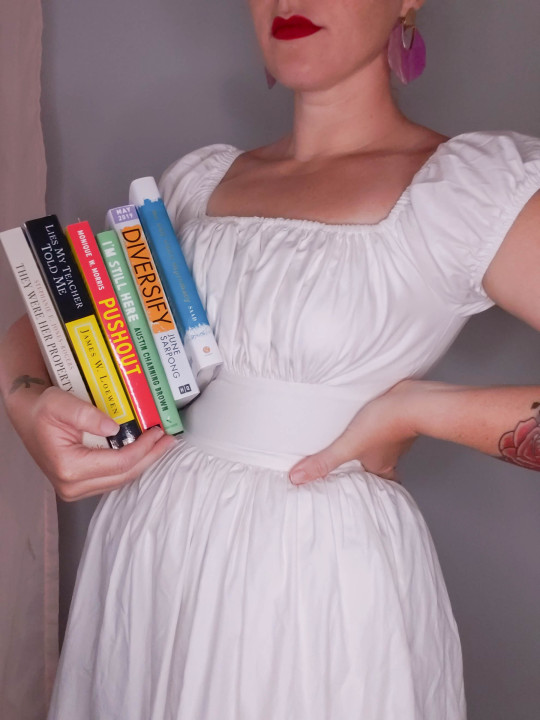
Here is a booklist for 4th of July that we White people need to read instead of just blindly celebrating 4th of July. Special thanks to Bookstgram Represent for additional resources on bookstore and additional readings. They’ve answered so many questions and helped me make sure that this list focuses on Black writers. Only one book on this list has a white author but it came as a suggestion from a group I was in from a Black teacher so it is included. This isn’t a complete list but over the last few weeks these are what I’ve started my readings with. So, let’s get started.
This post does contain affiliate links to Bookshop.org
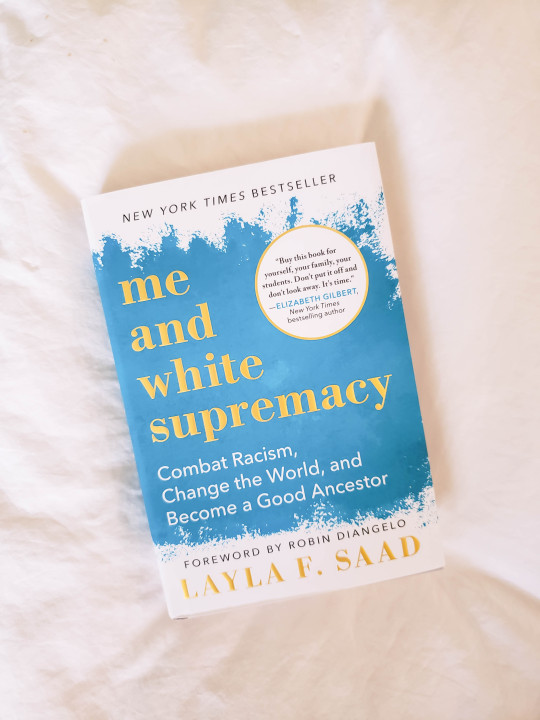
Me and White Supremacy: Combat Racism, Change the World, and Become a Good Ancestor by Layla F. Saad
This eye-opening book challenges you to do the essential work of unpacking your biases, and helps white people take action and dismantle the privilege within themselves so that you can stop (often unconsciously) inflicting damage on people of color, and in turn, help other white people do better, too.
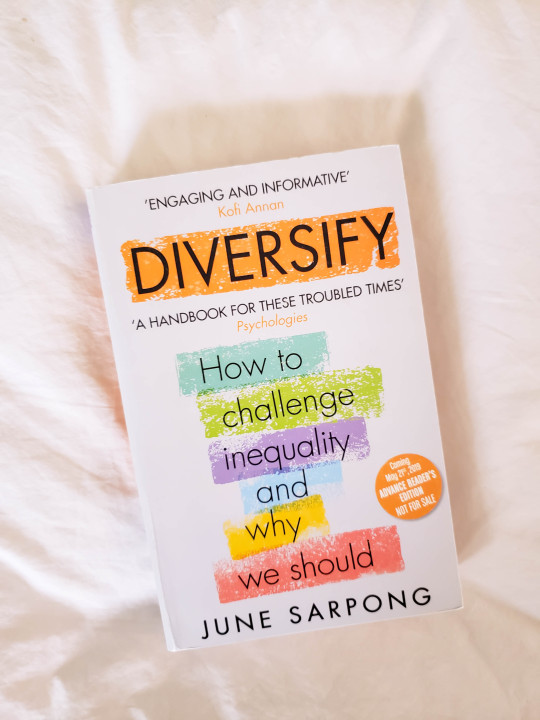
Diversify by June Sarpong
Putting the spotlight on groups who are often marginalised in our society, including women, ethnic minorities, those living with disabilities, and the LGBTQ+ community, Diversify uncovers the hidden cost of exclusion and shows how a new approach to how we learn, live and do business can solve some of the most stubborn challenges we face.
With unshakeable case studies, brand-new research from Oxford University, and six revolutionary steps to help you overcome unconscious bias, this book will help you become part of a better society.

I’m Still Here: Black Dignity in a World Made for Whiteness: Austin Channing Brown
Austin Channing Brown's first encounter with a racialized America came at age 7, when she discovered her parents named her Austin to deceive future employers into thinking she was a white man. Growing up in majority-white schools, organizations, and churches, Austin writes, "I had to learn what it means to love blackness," a journey that led to a lifetime spent navigating America's racial divide as a writer, speaker and expert who helps organizations practice genuine inclusion.In a time when nearly all institutions (schools, churches, universities, businesses) claim to value "diversity" in their mission statements, I'm Still Here is a powerful account of how and why our actions so often fall short of our words. Austin writes in breathtaking detail about her journey to self-worth and the pitfalls that kill our attempts at racial justice, in stories that bear witness to the complexity of America's social fabric--from Black Cleveland neighborhoods to private schools in the middle-class suburbs, from prison walls to the boardrooms at majority-white organizations.

Pushout: The Criminalization of Black Girls in Schools by Monique W. Morris
In a work that Lisa Delpit calls "imperative reading," Monique W. Morris (Black Stats, Too Beautiful for Words) chronicles the experiences of Black girls across the country whose intricate lives are misunderstood, highly judged--by teachers, administrators, and the justice system--and degraded by the very institutions charged with helping them flourish. Called "compelling" and "thought-provoking" by Kirkus Reviews, Pushout exposes a world of confined potential and supports the rising movement to challenge the policies, practices, and cultural illiteracy that push countless students out of school and into unhealthy, unstable, and often unsafe futures.
Called a book "for everyone who cares about children" by the Washington Post, Morris's illumination of these critical issues is "timely and important" (Booklist) at a moment when Black girls are the fastest growing population in the juvenile justice system. Praised by voices as wide-ranging as Gloria Steinem and Roland Martin, and highlighted for the audiences of Elle and Jet right alongside those of EdWeek and the Leonard Lopate Show, Pushout is a book that "will stay with you long after you turn the final page" (Bookish).
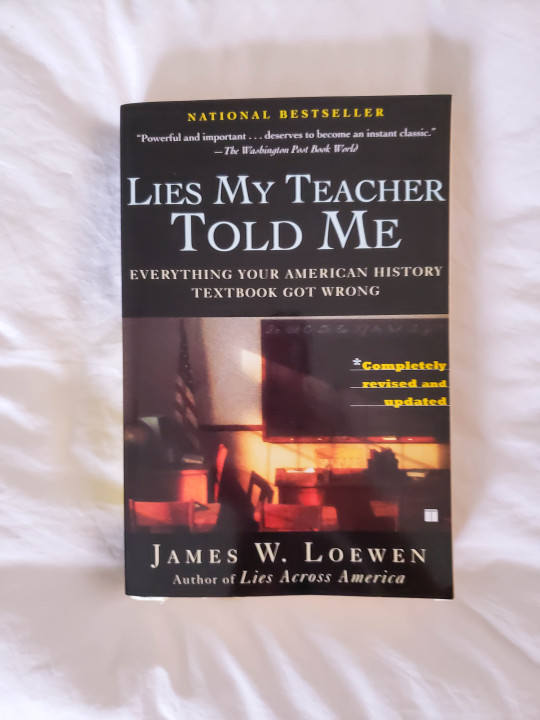
Lies My Teacher Told Me: Everything Your American History Textbook Got Wrong by James W. Loewen
Since its first publication in 1995, Lies My Teacher Told Me has become one of the most important--and successful--history books of our time. Having sold nearly two million copies, the book also won an American Book Award and the Oliver Cromwell Cox Award for Distinguished Anti-Racist Scholarship and was heralded on the front page of the New York Times.
For this new edition, Loewen has added a new preface that shows how inadequate history courses in high school help produce adult Americans who think Donald Trump can solve their problems, and calls out academic historians for abandoning the concept of truth in a misguided effort to be "objective."
What started out as a survey of the twelve leading American history textbooks has ended up being what the San Francisco Chronicle calls "an extremely convincing plea for truth in education." In Lies My Teacher Told Me, James W. Loewen brings history alive in all its complexity and ambiguity. Beginning with pre-Columbian history and ranging over characters and events as diverse as Reconstruction, Helen Keller, the first Thanksgiving, the My Lai massacre, 9/11, and the Iraq War, Loewen offers an eye-opening critique of existing textbooks, and a wonderful retelling of American history as it should--and could--be taught to American students.
*Specifically the chapters regarding slavery. This was a suggestion from a Black womxn in my Womxn for Tri for Justice. She said that Chapter’s 5 & 6 should start as required reading about slavery and then reading the whole book. The edition pictured above does not include the new preface.

They Were Her Property: White Women as Slave Owners in the American South by Stephanie E. Jones-Rogers
Bridging women's history, the history of the South, and African American history, this book makes a bold argument about the role of white women in American slavery. Historian Stephanie E. Jones-Rogers draws on a variety of sources to show that slave-owning women were sophisticated economic actors who directly engaged in and benefited from the South's slave market. Because women typically inherited more slaves than land, enslaved people were often their primary source of wealth. Not only did white women often refuse to cede ownership of their slaves to their husbands, they employed management techniques that were as effective and brutal as those used by slave-owning men. White women actively participated in the slave market, profited from it, and used it for economic and social empowerment. By examining the economically entangled lives of enslaved people and slave-owning women, Jones-Rogers presents a narrative that forces us to rethink the economics and social conventions of slaveholding America.
1 note
·
View note
Text
♥️♥️ matchups are here! ♥️♥️

We won’t spoil all the fun, so the only details you’ll get is the matchup. Feel free to reach out to each other ooc to plot in-depth, or allow yourself to be surprised! We’re leaving it up to you.
Knowing these matchups, please feel free to get started on your self-paras of your muses (whichever one) reacting to their valentine’s grams.
Retro workers tasked with deliveries do not have to do a self-para for their other muses if they do not want, but all other non-retro worker muns must have at least one muse react to the grams and/or delivery. Feel free to message us if you have questions!
Please post all delivery threads/self-paras by Wednesday, Feb 19.
coyote delivering to cam
aidan delivering vivienne
gloria delivering to lydia cromwell
cassie delivering to skylar
mattie delivering to marra o'brien
tasya delivering gabi reyes
mars delivering to charlie
hayden delivering to santana
3 notes
·
View notes
Text

Cadin Lawrence – Aparenta 24 años / 600 años – 23/05/xxxx – geminis – vampiro de sangre pura – FC: byun baekhyun
››[ h i s t o r i a ]
Cadin Lawrence fue el segundo de cinco hijos, tres varones y dos mujeres, nacido en el seno de una familia por demás de peculiar. Una familia compuesta nada más y nada menos que por vampiros de la nobleza. Cadin desde muy pequeño nunca conoció la vida precaria, al menos no con respecto a riqueza y cosas materiales, puesto que todo lo que exigía en ese ámbito, se le era concedido. Sin embargo, ¿Cuál fue el precio a pagar por aquella “amabilidad” por parte de su padre? Algo bastante sencillo, debía mostrarse digno como un heredero al apellido Lawrence.
Por ende, desde que era muy joven, se le fue inmiscuyendo en todo lo relacionado a las empresas familiares, más exactamente enfocadas a las nuevas invenciones del siglo. Cadin estudiaba igual que su hermano Kendrick, el mayor de todos ellos. Al comienzo era sencillo el seguirle el paso al mayor, por el simple hecho de que le admiraba y deseaba ser tan inteligente y dedicado como él. Pero en algún punto de la historia, Cadin había rebasado a su hermano y con pequeños pasos, le fue dejando atrás.
Su personalidad por demás de sanguinaria y carente de real rebeldía ante las ordenes de su ejemplo a seguir, su padre, le permitieron escalar rápidamente, convirtiéndose en el predilecto heredero de la familia Lawrence.
Para Cadin no existía el pasado, tampoco existía la posibilidad de mirar hacia atrás. Deslindándose totalmente de sus demás hermanos, se volvió un siervo en cuerpo y alma a su padre y sus deseos. De fiesta en fiesta, de reunión a reunión, Cadin se ganó cierto renombre entre los vampiros de altas castas o puestos.
El tiempo pasaba y el pequeño Cadin crecía, convirtiéndose en un jovencito encantador, con labia y carisma que era el centro de atención en aquellas fiestas donde solo acudían Vincent y él. No existían los otros 4 hijos, ni siquiera su madre. Sin embargo, el majestuoso castillo de cristal que Cadin tenía en su mente, comenzó a desmoronarse. Vampiros que bien podrían triplicar su edad, comenzaron a volverse demasiado allegados a él, comenzaron a invadir su espacio personal, caricias bajo la mesa, acosos en las esquinas de una mansión desconocida y sucedió lo inevitable: la oferta a convertirse en un objeto para ellos.
Su padre, inmutable ante aquello que veía y escuchaba simplemente se encogió de hombros. Cadin, perdió una parte de su alma aquella noche.
“¿Ni siquiera todos los esfuerzos que he hecho han logrado que me convierta en realmente alguien digno de tu orgullo, Vincent Lawrence?”
Queda demás decir que desde entonces, las cosas comenzaron a quebrarse en la vida del segundo Lawrence. Su motivación con respecto a sus clases comenzó a mermar, además de que su gusto por las fiestas desapareció, optando por escaparse y correr, correr hasta imaginar que el aire se escapaba de sus pulmones. Gritó, pataleó y al final, sintió lo que era la libertad. Estaba harto, no tenía motivación.
La gota que rebalsó el vaso ya colmado, fue cuando Vincent arremetió contra Kendrick, su querido hermano, su gran ejemplo a seguir. Aquel que por más que se esforzara, luchara día con día y buscara superarse, era aún catalogado como un inútil y un bueno para nada. Colmado de penas y sentimientos negativos, Cadin se abalanzó contra su padre en una pelea que si bien no se consideraba justa, fue un canalizador de su ira. Cadin por primera vez saboreó lo que era la muerte, sintió en sus maltrechos huesos lo que era el odio y su vida prácticamente se esfumaba de entre sus dedos. Después de la gran paliza que su padre le dedicó y por la cual nunca se vio realmente afligido, Cadin aseguró que su padre estaba muerto para él.
Conforme los años pasaban y la atención de su familia se desvió de él hasta el mayor de nueva cuenta y al tercer hijo, Elliot, Cadin tuvo el tiempo justo para pensar en su existencia, en la valía de ella. Su conclusión, por supuesto, fue trágica. No tenía sentido vivir una vida inmortal, ver como todo se marchitaba alrededor de él, ver como los humanos nacían, crecían y morían y él se quedaba exactamente igual. ¿Cuál era la razón de haber sido maldecidos como vampiros?
Buscó emociones más fuertes, inmiscuyéndose en la vida de los humanos y moviéndose entre ellos como el pez va con la corriente. Adquirió sus vicios, sus pasiones y sus gustos más retorcidos. Sin embargo, nunca le fue suficiente el solo experimentar, el jugar con presas, el degustar la cantidad descomunal de sangre entre sus manos, nada era suficiente para llenarlo. No hasta que apareció Kasey en su vida.
El cazador, un ente peligroso para los de su raza, se robó toda la atención del vampiro. Su vida retomó un camino más arado, mucho más amplio y sano, Cadin volvió a ser aquel vampiro que anhelaba vivir muchos siglos más si era en compañía de tan enigmática criatura como era Kasey. Lo que llegó a pensar que se trataría de una simple noche de copas, se convirtió poco a poco en un sentimiento mucho más fuerte, que a pesar de ser consciente de que Kasey podría matarlo en cualquier momento, no le importaba en absoluto. Si debía morir, deseaba que fuese en los brazos del otro.
Aquel extraño sentimiento en él, podría ser denominado amor.
Un sentimiento puro y casto, demasiado íntimo y que todos deberían tener el placer de experimentar aunque sea una vez en su vida. Sin embargo, no todo es miel sobre hojuelas cuando tu amante, es un vampiro. Cadin descubrió lo que eran los celos, tristeza, la soledad y sobretodo el miedo de que Kasey, siendo un simple mortal, se le fuese arrebatado de las manos. Por ende, una noche cuando ambos se encontraban en compañía del otro, tomados de las manos y Cadin robándose ese calor tan surreal del humano, dejó caer la cuestión: ¿Estás dispuesto a pasar toda la eternidad conmigo, Kasey? Como dos vampiros, unidos y conectados como si tuviésemos una sola alma. Por siempre y para siempre.
El cazador negó su petición, de un modo dulce y centrado como siempre, logrando que Cadin se quedarse tranquilo por un corto periodo de tiempo. Pero como era habitual, su mente comenzó a carcomerlo con ideas de que tal vez Kasey no lo amaba, que estaba arrepentido de estar con él, de que tal vez todo era una sucia treta para matarlo a la luz del sol.
El Cadin que solía vivir despreocupado, cambió totalmente. Volviendo obsesivo, celoso, posesivo hasta el punto donde era aterrador, había sido engullido totalmente por lo que solo existía en su cabeza. Despertando la sed de sangre.
Sin darle vueltas a la situación o siquiera poner las cartas sobre la mesa, Cadin fue cegado por sus instintos más naturales, aquellos que rozaban la bestialidad y la demencia. Luego de una muy pequeña lucha, el vampiro tomó a la fuerza a quien era su amante, el amor de su vida, convirtiéndolo en contra de su voluntad en aquella criatura nocturna a las cuales solía cazar. Kasey, se volvió un vampiro. Tarde sería cuando se diese cuenta, de la terrible decisión que había tomado.
Arrepentido y con la vergüenza más que latente, Cadin intentó enmendarse, sin embargo fue demasiado tarde. Kasey, con la inmensa fuerza de voluntad que tenía, se alejó de Cadin, desapareciendo del mapa. Con el corazón maltrecho y una inmensa soledad engulléndolo, volvió a casa. Donde la tragedia no se detuvo ni por asomo.
Elliot era prácticamente otra persona, no era ni la sombra de quien alguna vez fue. Ese niño lleno de alegría, carisma y bondad, una mancha blanca en el lienzo de oscuridad que eran todo los Lawrence; ahora era parte de la familia en todas sus letras. Los Cromwell, se habían aprovechado de que ellos bajaron la guardia, se aprovecharon de las buenas intenciones que el tercer hijo tenía y lo habían destruido, en cuerpo y alma.
¿Dónde había estado él para detener aquel acabose? Era su culpa, había decepcionado no solo la confianza de Kendrick, sino había abandonado a quienes más lo necesitaban.
Actualmente los Lawrence son una familia unida, culpa de todas las derrotas que han pasado durante años. Sin embargo y como cualquier familia de nobles orgullosos, piensan conseguir poder, gloria y su venganza contra el enemigo, desmoronándolos hasta que sus cenias queden absolutamente consumidas.
››[ d e s c r i p c i ó n ]
{ ✕ }➞【 P e r s o n a l i d a d 】
▌Cadin siempre ha sido mimado, lleno de deseos de ser cuidado y tratado como un rey. Al haberse inmiscuido de toda responsabilidad con respecto a las empresas y su deseo nulo de poder en ese aspecto, le hicieron verse ciertamente perezoso y un tanto holgazán. Odia pelear y verse como un salvaje, igualmente tiende a ser demasiado quisquilloso con la sangre, la comida o cualquier cosa que tenga que tocar, oler o ver.
▌Es ciertamente egoísta y muy sobreprotector con todos sus hermanos, desde lo sucedido con Elly no ha podido tener paz interior. Igualmente y gracias a Kasey, no ha podido deslindarse de su personalidad posesiva y ciertamente, obsesiva. Si algo lo considera suyo, peleará con uñas y dientes, incluso perdiendo toda la finesa de la cual se jacta. Cuando llega a ese límite, es la más pura imagen de salvajismo.
▌Suele tener un lado bastante retorcido, al ser muy difícil que algo le llame realmente la atención. Los humanos le interesan, pero cuando estos dejen de entretenerlo, no dudara en matarlos por el simple placer que le causa. Es un sádico cuando quiere serlo y necesita serlo, es quien en realidad se puede encargar de las pequeñas torturas cuando los Lawrence se llenan de enemigos.
▌Tiene un lado coqueto y con una labia muy grande, es de entre sus 5 hermanos, el más propio para casarse, según palabras de sus padres. Así que hace los pequeños esfuerzos de lograr conseguir una gran vampiresa que lo vea como lo más grande y lo trate como un rey.
››[ h a b i l i d a d e s ]
Como todo vampiro, cuenta con regeneración, velocidad y fuerza superior a la de un humano normal. Su especialidad por su tamaño más pequeño y hasta “compacto” es sin duda, la velocidad.
Aprendió levitación o una especie muy pobre de telequinesis, suele mover cosas pero solo si son muy pequeñas. En cambio, cuando se trata de levitar, es bastante bueno.
Aquello que heredó de su padre fue el poder de controlar la energía de sus alrededores, más específicamente aquella que es oscura, maligna. Al ser una energía por demás de pesada, suele comenzar a consumir su cuerpo, a pesar de la regeneración. Evita a toda costa usarla demasiado, puesto que nunca ha alcanzado el limite donde ni siquiera él mismo pueda controlarse.
››[ d a t o s e x t r a s ]
♛›› Cuando pequeño admiraba mucho a Kendrick, hasta el punto donde quería ser tan inteligente y entregado como lo era el mayor. Sin embargo, conforme crecía y las experiencias iban llegando, se dio cuenta de que solo él podría ser digno de ser el heredero.
♛›› Es muy débil ante Elly, se siente culpable por no haber estado cuando las cosas estaban mal con él y por ende, hace todo lo que él quiera o como él lo desea. Tienen una relación muy estrecha.
♛›› Adeline y él tienen especial gusto por los humanos, armándose sus rebaños de sangre pura para ser bebida. Suelen tener problemas cuando Cadin, se deshace de una forma terrible de esos humanos.
♛›› Regina y él tienen gustos muy similares, con respecto a lo material. Por ende, suele ser muy consentidor con la menor de los Lawrence, colmandola de joyas, ropa bonita y demás de cosas que solo se miden con poder monetario.
♛›› Nikolaj y él solían cazar juntos cuando este venía a visitarles, teniendo una relación estrecha en el ámbito casi familiar.
♛›› Ama a Kasey más que a cualquier cosa en el mundo, podría hacer todo lo que él le pidiera, incluso abandonar su familia y sus comodidades.
♛›› Fue abusado psicológica, física y sexualmente por los amigos de su padre, en repetidas ocasiones y en muchas fiestas. Muchas de esas veces, Vincent estaba presente sin ser participe.
♛›› Si ha de dedicarse a algo, es la caza de humanos de buena sangre. No tiene interés en las empresas familiares con respecto a los autos.
♛›› Es bélico por naturaleza. Le gusta cazar y jugar con los humanos, igualmente todo querrá resolverlo de un modo destructivo. No le gusta pelear si, pero eso no quiere decir que realmente sea un sanguinario.
♛›› Odia a su padre y desea que esté muerto como su madre. Realmente le tiene rencor desde los abusos contra sus hermanos y él mismo, desde lo que sucedió con el ojo de Kendrick, hasta los golpes con respecto a Elly.
♛›› Igualmente está cómodo con que su madre muriera, puesto que consideraba que lo único que sabía hacer, era parir. Le molestaba de sobremanera que quisiera hacer a Lin y Regina como ella.
♛›› Está marcado por algunas cicatrices que su regeneración realmente no logró sanar como debería, todo por su modo tan enfermizo de buscar emociones nuevas y sensaciones que le llevaran al límite. Igualmente tiene cicatrices desde la pelea con su padre.
♛›› Detesta los gatos puesto que sus pelos, siempre terminan en su ropa limpia. Sin embargo, no puede echarlos de su habitación o de la casa porque Elly los adora.
#ヾ✮*。 𝚃𝙷𝚁𝙴𝙰𝙳 ╱ cadin lawrence#ヾ✮*。 𝙻𝙴𝚃𝚃𝙴𝚁 ╱ cadin lawrence#ヾ✮*。 𝙼𝙸𝙽𝙳 ╱ cadin lawrence#ヾ✮*。 𝙿𝙾𝙻𝙰𝚁𝙾𝙸𝙳 ╱ cadin lawrence#ヾ✮*。 𝙾𝙽𝙻𝙸𝙽𝙴 ╱ cadin lawrence#ヾ❖*。 𝙳𝙰𝚃𝙰 ╱ TAG DUMP#ptm falta la parte del ''futuro''#pero me da harta flojera editarlo ahorita#así que será luego#tw: abuse#like en todo sentido#obvio le busqué un iconsito a baek con el pelito rojo para la bio de cadin www
1 note
·
View note
Text
August Highlights
Wednesday, August 1
Original Series – Episode Premiere on Disney Channel
Big City Greens “Breaking News/Cyberbullies”
(10:00 – 10:30 A.M. EDT)
“Breaking News” – When Bill grows a huge watermelon, Cricket invites the local news to see the mega melon. *Raven-Symon (“Raven’s Home”) guest stars as TV reporter, Maria Media.
“Cyberbullies” – Cricket stands up to the cyberbullying of three online gamers known as the Cyber Knights.
TV-Y7
Friday, August 3
Original Series – Episode Premiere on Disney Junior
Vampirina “Home Scream Home”
(10:30 – 11:00 A.M. EDT)
“Home Scream Home” – Vampirina returns to Transylvania and brings along her Ghoul Girls bandmates, Poppy and Bridget, to compete in a talent competition. *Adam Devine (“Workaholics”) guest stars as Poltergeist Pat, the leader of a rival boy band group called The Boo Boys.
TV-Y
Original Series – Episode Premiere on Disney Junior
Fancy Nancy “Nancy’s Devine Sleepover/Nancy’s Sacrebleu Fondue”
(11:00 – 11:30 A.M. EDT)
“Nancy’s Devine Sleepover” – Nancy and JoJo have a sleepover at Mrs. Devine’s house.
*Tony Award-winner Christine Baranski guest stars as Mrs. Devine.
“Nancy’s Sacrebleu Fondue” – When Nancy’s cousin Jonathan visits, she feels threatened when he acts fancier than her. *Ian Chen (“Fresh off the Boat”) guest stars as Jonathan.
TV-Y
Saturday, August 4
Original Series – Episode Premiere on Disney Channel
DuckTales “The Secret(s) of Castle McDuck!”
(9:30 – 10:00 A.M. EDT)
On a family trip to Scrooge’s ancestral castle, Dewey tries to hide the truth about his mom as his brothers search for family secrets. *Graham McTavish (“The Hobbit” trilogy) and Ashley Jensen (“Ugly Betty”) guest star as Scrooge’s parents, Fergus and Downey McDuck, respectively.
TV-Y7
Original Series – Episode Premiere on Disney Junior
Elena of Avalor “All Kingdoms Fair”
(11:00 – 11:30 A.M. EDT)
Elena puts Armando in charge of the All Kingdoms Fair and helps him regain his confidence after a visit from his older brother makes him feel insecure in his abilities. *Horatio Sanz (“Saturday Night Live”) guest stars as Armando’s brother, Santos.
TV-Y
Wednesday, August 8
Original Series – Episode Premiere on Disney Channel
Big City Greens “Coffee Quest/Phoenix Rises”
(10:00 – 10:30 A.M. EDT)
“Coffee Quest” – When Big City faces a coffee bean shortage, Cricket and Gloria’s boss, Ms. Cho, challenges them to retrieve one of a few remaining sacks of coffee. *Paul Scheer (“The League”) returns as Chip Whistler.
“Phoenix Rises” – When the Greens’ dog, Phoenix, runs away from home, the family sets out to find her.
TV-Y7
Friday, August 10
Original Series – Episode Premiere on Disney Junior
Fancy Nancy “Nancy’s Dog Show Disaster/The Case of the Disappearing Doll”
(11:00 – 11:30 A.M. EDT)
“Nancy’s Dog Show Disaster” – Nancy replaces her dog, Frenchy, with a well-trained dog in the neighborhood Dog Show. *Tony Award-winner Christine Baranski returns as Mrs. Devine and Malachi Barton (“Stuck in the Middle”) guest stars as Nancy’s neighbor, Lionel.
“The Case of the Disappearing Doll” – When Nancy’s doll goes missing, she sets out to find who took her.
TV-Y
Saturday, August 11
Original Series – Episode Premiere on Disney Channel
DuckTales “The Last Crash of the Sunchaser!”
(9:30 – 10:00 A.M. EDT)
Stuck on a precarious peak, the kids secretly search the plane for the final clue about Della’s mysterious disappearance.
TV-Y7
Original Series – Episode Premiere on Disney Junior
Elena of Avalor “A Lava Story”
(11:00 – 11:30 A.M. EDT)
Elena helps Charoca learn an important lesson in honesty after he meets a female rock creature named Charica and tries to win her over. *Danielle Brooks (“Orange is the New Black”) guest stars as Charica and Tituss Burgess (“Unbreakable Kimmy Schmidt”) returns as Charoca.
TV-Y
Friday, August 17
Original Series – Episode Premiere on Disney Junior
Mickey and the Roadster Racers
“Super-Charged!/Super-Charged: Mickey’s Monster Rally”
(9:00 – 9:30 A.M. EDT)
“Super-Charged!” – Professor Von Drake super-charges Mickey’s roadster, giving it super-speed and a few surprises.
“Super-Charged: Mickey’s Monster Rally” – Mickey and the gang must chase after Pete’s truck, which was accidentally transformed into a Monster Truck.
TV-Y
Original Series – Episode Premiere on Disney Junior
Fancy Nancy “La Danse of Friendship/Shoe La La!”
(11:00 – 11:30 A.M. EDT)
“La Danse of Friendship” – Nancy learns the value of compromise when she and Bree create a Pas de Deux for dance class.
“Shoe La La!” – Nancy finds the shoes of her dreams but discovers they’re not in her family’s budget. *Ivonne Coll (“Jane the Virgin”) guest stars as flower shop owner, Ms. Camila.
TV-Y
Saturday, August 18
Original Series – One-Hour Season Finale on Disney Channel
DuckTales “The Shadow War!”
(9:30 – 10:30 A.M. EDT)
Magica De Spell is close to exacting revenge on Scrooge, so the family races against time to plan a dangerous rescue mission to save Scrooge and the city. *Don Cheadle (“Avengers: Infinity War”) guest stars as Donald Duck’s intelligible voice as a result of an inventive voicebox. Reprising their roles are Lin Manuel-Miranda (Broadway’s “Hamilton) as Fenton Crackshell-Cabrera (aka Gizmoduck), Catherine Tate (“Doctor Who”) as Magica De Spell and Kimiko Glenn (“Orange Is the New Black”) as Lena.
TV-Y7
Friday, August 24
Original Series – Episode Premiere on Disney Junior
Mickey and the Roadster Racers
“Super-Charged: Pop Star Helpers/The Chip ‘N Dale 500”
(9:00 – 9:30 A.M. EDT)
“Super-Charged: Pop Star Helpers” – The Happy Helpers are hired to get pop star Nina Glitter to her show on time. *Recording artist Sabrina Carpenter guest stars as pop star Nina Glitter.
“The Chip ‘N Dale 500” – Chip and Dale shrink everyone down to their size.
TV-Y
Original Series – Episode Premiere on Disney Junior
Vampirina “Countess Vee/Frights Camera Action”
(10:30 – 11:00 A.M. EDT)
“Countess Vee” – Vee trains to become a countess after being named heir to Spookelton Castle in Transylvania.*Legendary stage, film and television actressCarol Kane (“Unbreakable Kimmy Schmidt”) guest stars as Madame Spook.
“Frights Camera Action” – Vampirina helps Edgar film a spooky monster movie for the school film festival.
TV-Y
Original Series – Episode Premiere on Disney Junior
Fancy Nancy “Camp Fancy/Nancy’s Vanity D’Art”
(11:00 – 11:30 A.M. EDT)
“Camp Fancy” – Nancy learns to make the best of things when a rainstorm ruins the family campout.
“Nancy’s Vanity D’Art” – When Nancy wants her Grandma’s vanity, she learns it holds special memories for her Grandpa. *George Wendt (“Cheers”) returns as Grandpa.
TV-Y
Saturday, August 25
Original Series – Episode Premiere on Disney Channel
Big Hero 6 The Series “Mini-Max”
(9:00 – 9:30 A.M. EDT)
Hiro invents a tiny robot, Mini-Max, to supervise and be a sidekick to Fred while the rest of the team is in class. *John Michael Higgins (“Pitch Perfect”) guest stars as Mini-Max and James Cromwell (“The Young Pope”) reprises his role as Professor Callaghan.
#Vampirina#Elena Of Avalor#Fancy Nancy#Disney's Fancy Nancy#DuckTales#DuckTales 2017#Big City Greens#BCG#Mickey and the Roadster Racers#Big Hero 6#Big Hero 6 The Series#Disney Channel#Disney Junior
85 notes
·
View notes
Text
LUCY & HENRY FONDA ~ Part One
1935-1968

Lucille Ball and Henry Fonda were more than just co-workers. When Lucy first got to Hollywood, the two actually briefly dated. Lucy remembers,

"We worked long and hard, Ginger [Rogers] and I, in front of our mirrors. We used eye shadow, plenty of mascara, pancake [make-up], deep red lipstick, rouge, everything we'd been taught in the studio cosmetic department. Then we went out to Brentwood, that's where the boys lived. My date was Fonda. Ginger's date was [Jimmy] Stewart. Henry cooked the dinner, and after we ate, Ginger and the boys turned on the radio in the living room and Ginger tried to teach them ‘The Carioca.’ I was left doing the dishes. When I finished, we went out dancing at the Coconut Grove. Freddie Martin's orchestra. There we were, Ginger and I in our long organdy dresses, looking just as summery and smooth as we could. The date stretched into daybreak. We'd had a hilarious, wonderful evening that came to an end at Barney's Beanery. Well, it was dark and we went in and light when we came out. Hank and Jim took one look at us and said, 'What happened?' We said, 'What do you mean what happened?' And Jimmy Stewart said, 'Well, your nighttime makeup is on awful heavy for this time of the morning.' And Henry Fonda said, 'Yuk!'"
In 1975 Fonda told this story at “The Dean Martin Celebrity Roast” for Lucille Ball. Ginger Rogers was also in attendance. He added that "If I hadn't said, 'Yuk!', if I'd behaved myself, they might have named that studio Henrylu, not Desilu."

Perhaps it is a good thing that Fonda and Ball never married as genealogists point out that they are related - 8th cousins. The pair acted in three feature films together and made numerous television appearances opposite one-another. Curiously, although he was sometimes mentioned, Fonda never guest-starred on a “Lucy” sitcom.
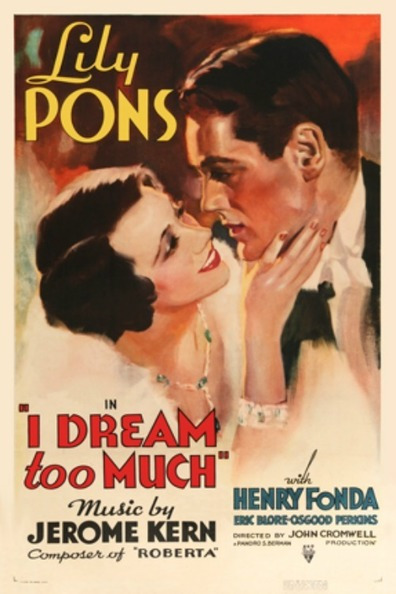
I Dream Too Much (1935)
Producer: Pandro S. Berman
Director: John Cromwell
Choreographer: Hermes Pan
Screenplay: Elsie Finn (story), David G. Wittels (story), Edmund North
Songs: Jerome Kern and Dorothy Fields
Cast: Lily Pons (Annette Monard Street), Henry Fonda (Jonathan Street), Eric Blore (Roger Briggs), Osgood Perkins (Paul Darcy), Lucien Littlefield (Hubert Dilley), Lucille Ball (Gwendolyn Dilley)
Synopsis: Annette Monard Street (Lily Pons) is an aspiring singer, who falls in love with and marries Jonathan Street (Henry Fonda), a struggling young composer. Jonathan pushes her into a singing career, and she soon becomes a star. Meanwhile, Jonathan is unable to sell his music, and he finds himself jealous of his wife's success. Concerned about their relationship, Annette uses her influence to get Jonathan's work turned into a musical comedy. Once she achieves this, she then retires from public life in order to raise a family.
"Lucille replaced Betty Grable, an eighteen-year-old stock player... in the minor role of Gwendolyn Dilley, a bleached-blonde gum-chewer visiting Paris with her parents and little brother.” ~ Kathleen Brady, Lucille

Gwendolyn Dilley (Lucille Ball): "Culture is making my feet hurt."
TRIVIA
At this point in her career, Lucy was a platinum blonde. She had dyed it from her natural mousy brown to get more attention from casting agents and producers. She did not begin coloring her hair its trademark red until the technicolor film Du Barry Was A Lady in 1943.
A brief clip of Lucy in the film is included in “Hollywood the Golden Years: The RKO Story: A Woman's Lot” (1987).
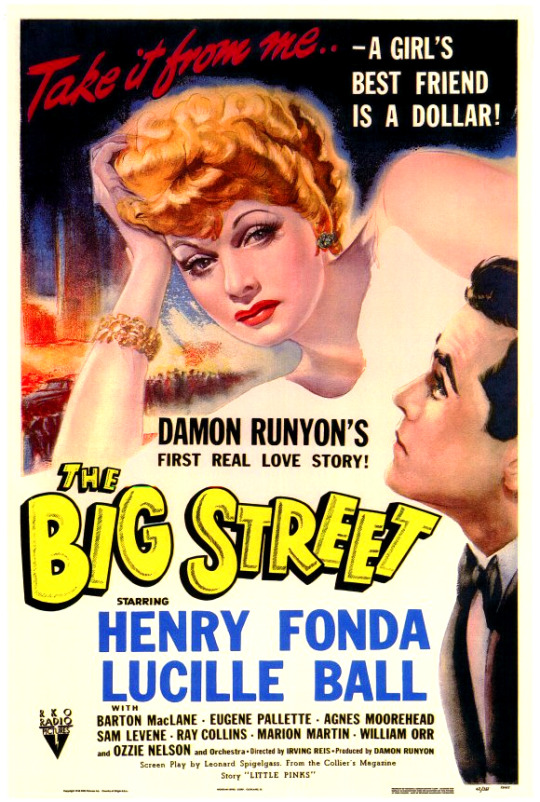
The Big Street (1942)
Producer: Damon Runyon
Director: Irving Reis
Screenplay: Leonard Spigelgass, based on the short story “Little Pinks” by Damon Runyon
Cast: Henry Fonda (Little Pinks), Lucille Ball (Gloria Lyons), Barton MacLane (Case Ables), Eugene Pallette (Nicely Nicely Johnson), Agnes Moorehead (Violette Shumberg), Sam Levene (Horsethief), Ray Collins (Professor B)
Uncredited actor Hans Conried played a waiter. On “I Love Lucy” he played Harry Martin in “Redecorating” (S2;E8) and Percy Livermore in “Lucy Hires an English Tutor” (S2;E13), both in 1952. He also did two episodes of “The Lucy Show,” both as her music tutor Dr. Gitterman in 1963.
'Queen of the Extras' Bess Flowers made numerous uncredited background appearances on both “I Love Lucy” and “The Lucy Show.”
Uncredited actor Gil Perkins (Mug) later turned up on a 1970 episode of “Here's Lucy” (S2;E21).
TRIVIA
During filming, Lucy's new husband Desi Arnaz felt so insecure about leaving Lucy and Fonda alone together that he’d often pop by the set to keep an eye on them. His paranoia so exasperated director Irving Reis that he finally banned him from the set.
This was Lucille Ball's favorite of her nearly 80 films. She felt her performance was unjustly ignored by the Academy.
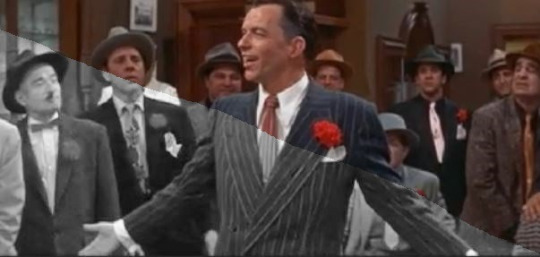
Damon Runyon also created the source material for the hit Broadway musical Guys and Dolls (1950), which starred Robert Alda, who went on to make several appearances on “The Lucy Show.” The two stories share the character of Nicely Nicely Johnson. When the film version was made by MGM in 1955, Lucy and Desi were also under contract to the studio. A brief clip of the film was inserted into the middle of an episode of “I Love Lucy” called “Lucy and the Dummy” (S5;E3), although the clip was removed after its initial airing. Further, when Lucille Ball first came to Hollywood, before becoming a contract player at RKO, she worked for Sam Goldwyn as one of the Goldwyn Girls. In Guys and Dolls, the Hot Box Girls are played by the Goldwyn Girls.
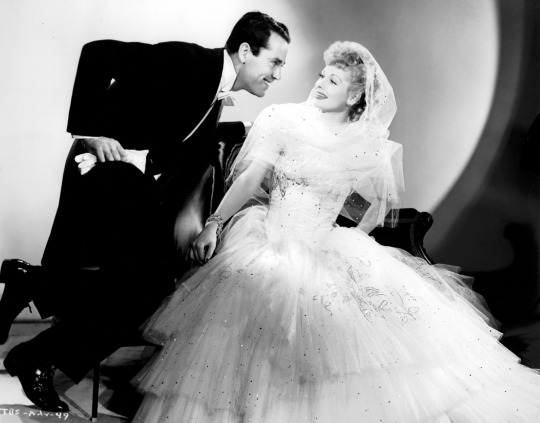
Gloria Lyons (Lucille Ball): “Love is something that gets you one room, two chins, and three kids.”
A brief clip from the film is seen in “Lucy and Desi: A Home Movie.”
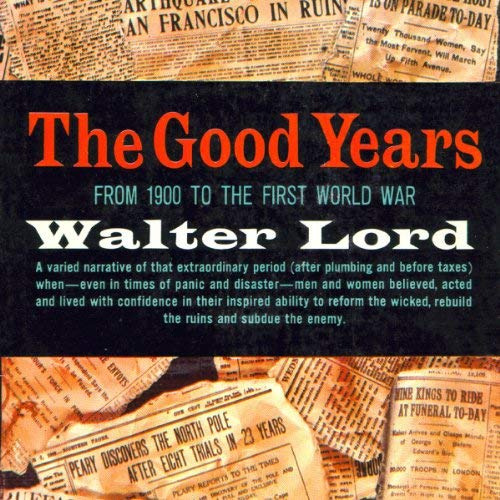
“The Good Years” (January 12, 1962)
Produced by: Leland Heyward
Directed by: Franklin L. Schaffner
Cast: Lucille Ball, Henry Fonda, Mort Sahl, Margaret Hamilton (Narrator)
Characters included Teddy Roosevelt, Sandow the Bodybuilder, the Wright Brothers, J.P. Morgan, Lizzy Borden
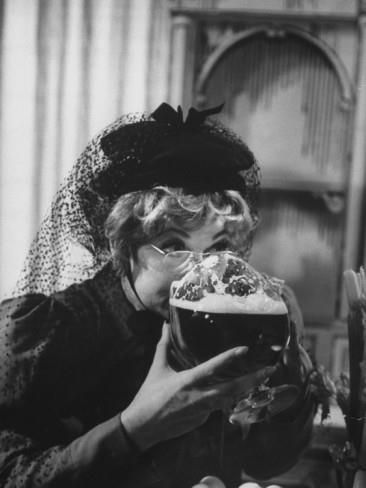
TRIVIA
This CBS special was billed as 'Lucille Ball's return to television' after leaving Lucy Ricardo behind in April 1960. It would be several more months before the debut of “The Lucy Show” in Fall 1962.
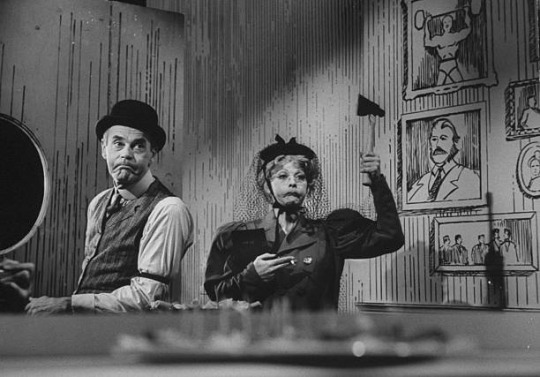
Based on a best-selling book by Walter Lord first published in 1960 about the years leading up to World War One, the special was a hodge-podge of sketches and musical numbers about the time period 1900 through 1920.

Mort Sahl: “Lucille Ball came into rehearsal. She had a later call and a lot of doubts about the script.”

The 90-minute special was a critical failure and has largely been forgotten. There are few photographs and video copies are held at the Museum of Broadcasting.
“All About People” (1967)
Director: Saul Rubin
Narrators: Lucille Ball, Henry Fonda, Jack Benny, George Burns, Carol Channing, Eydie Gorme, Charleton Heston, Eartha Kitt, Burt Lancaster, Edward G. Robinson
TRIVIA
This was a 30-minute black and white documentary made by the United Jewish Welfare Fund about its history.
After marrying Gary Morton (nee Morton Goldapper), Lucille Ball was active in Jewish charities. On December 9, 1961, Lucy had appeared on the “Twelve Star Salute to the Federation of Jewish Philanthropies.”
Burns, Benny, and Gorme, all later made appearances on “Here's Lucy.” Edward G. Robinson did a cameo on “The Lucy Show.”
Although Ball and Fonda are both involved in the project, they likely recorded their narration separately.
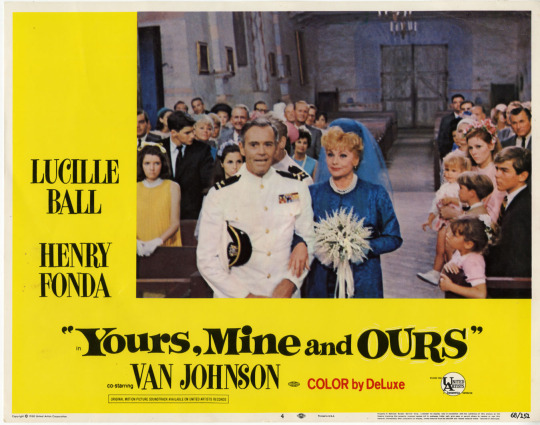
Yours, Mine and Ours (1968)
Producer: Robert F. Blumofe
Director: Melville Shavelson
Screenplay: Melville Shavelson and Mort Lachman, with story by Bob Carroll Jr. and Madelyn Davis (Lucy’s TV writers), based on the book Who Gets The Drumsticks? by Helen Eileen Beardsley
Cast: Lucille Ball (Helen North Beardsley), Henry Fonda (Frank Beardsley), Van Johnson (Darrel Harrison)
Nancy Howard (Nancy Beardsley) made three appearances on “Here's Lucy.” Tim Matheson (Mike Beardsley) made an appearance on a 1972 “Here's Lucy” playing Kim Carter’s boyfriend.
Uncredited extras Leon Alton, Paul Bradley, Charles Cirillo, George Boyce, Paul King, Joseph LaCava, and Leoda Richards all made numerous background appearances on “The Lucy Show” and “Here's Lucy.”
Synopsis: A widower with ten children falls for a widow with eight, and they must decide about forming a huge, unconventional family.
TRIVIA
Jane Fonda claimed that her father was deeply in love with Lucy and that the two were "very close" during the filming of Yours, Mine and Ours but that Lucy wasn't in love with him.
After purchasing the rights to the book the film was based on, Lucille Ball became very close to the real Beardsleys and even treated the whole family to a vacation at Disneyland.
In 1959, Lucille Ball and Desi Arnaz, still affiliated with MGM, were going to star as Frank and Helen Beardsley but the studio had trouble with the casting until the late 1960s. In addition, their marriage was then on the rocks, a situation which would have made working together on the optimistic comedy somewhat problematic.
Lucy's old friend John Wayne was initially considered to play Frank Beardsley. The role was cast with Fred MacMurray, but he was replaced by Henry Fonda.

Frank (Henry Fonda): “I don't quite understand. Am I being stupid?”
Helen (Lucille Ball): “No, you're being a man. Which is sometimes the same thing.”
Lucille Ball co-produced the film under her company, Desilu Productions. When the film became a surprise smash hit grossing over $17 million on a $2.5 million investment, she hadn't anticipated the film's huge box-office success and failed to provide a tax shelter for her personal profits, resulting in most of her earnings going toward taxes.

The success of the film led to Lucy being considered to play Mrs. Brady in “The Brady Bunch,” a TV sitcom with a similar story of a blended family. Lucy decided to do her own sitcom, “Here's Lucy,” instead.
In 1968, Van Johnson guest starred on “Here's Lucy” as both himself and an impostor look-alike in “Guess Who Owes Lucy $23.50” (HL S1;E11). The dialogue contained references to Yours, Mine and Ours and their co-star Henry Fonda.

Van Johnson Impostor: “I loved working with that kooky redhead.”
Lucy Carter: “Personally, I thought she was much too young for Henry Fonda.”
Johnson was in the cast of Too Many Girls, the film which introduced Lucy to Desi in 1940. Johnson also guest-starred on “I Love Lucy” in “The Dancing Star” (S4;E27) in 1955.
Click Here for Part Two: 1975 to 1979!
#Lucille Ball#Henry Fonda#Lucy#Fonda#The Big Street#Ginger Rogers#Jimmy Stewart#I Dream Too Much#RKO#Lily Pons#Damon Runyon#Guys and Dolls#The Lucy Show#Here's Lucy#I Love Lucy#Desi Arnaz#The Good Years#Mort Sahl#CBS#TV#Walter Lord#All About People#United Jewish Welfare Fund#Yours Mine and Ours#Van Johnson#The Brady Bunch#MGM
14 notes
·
View notes